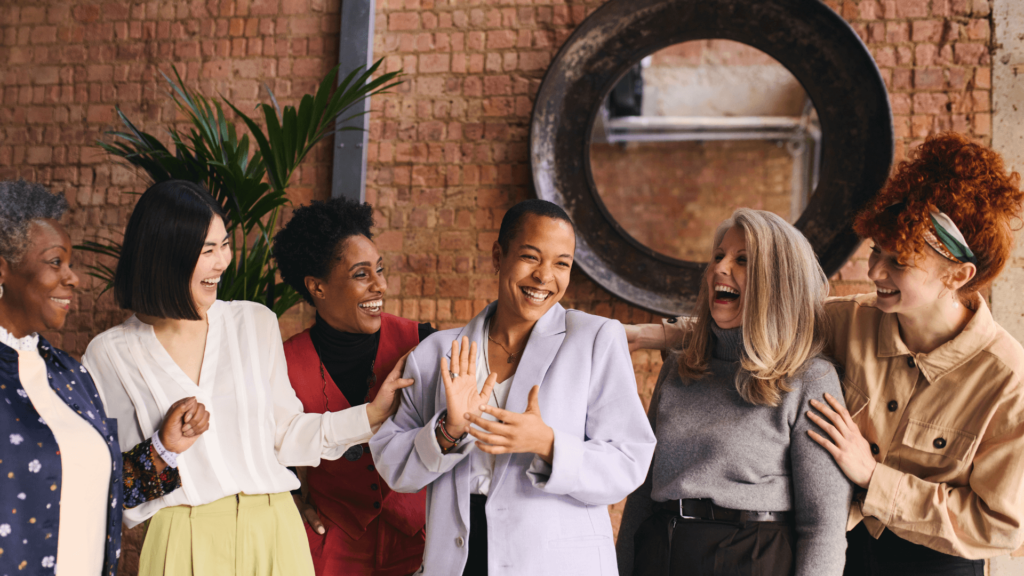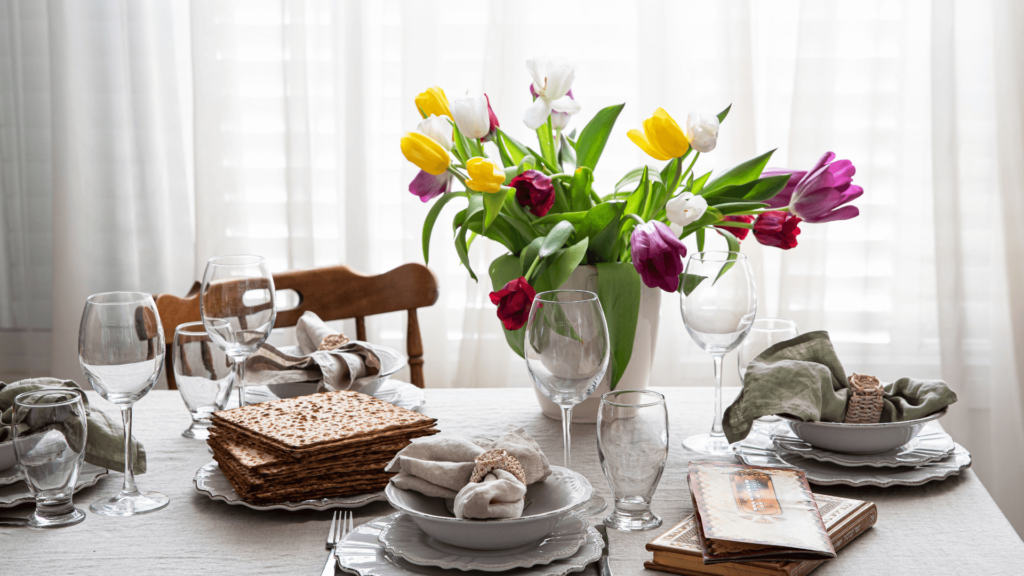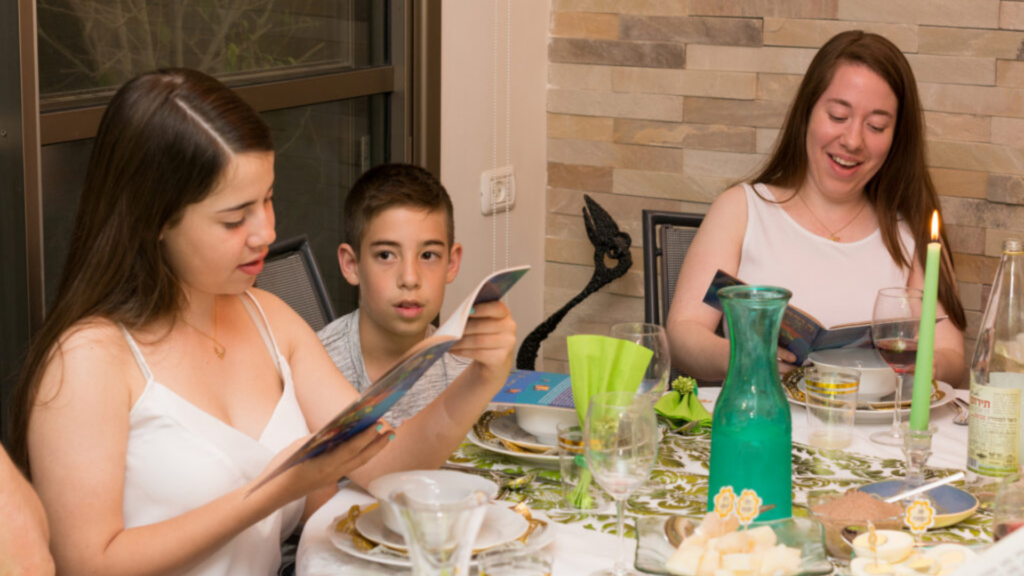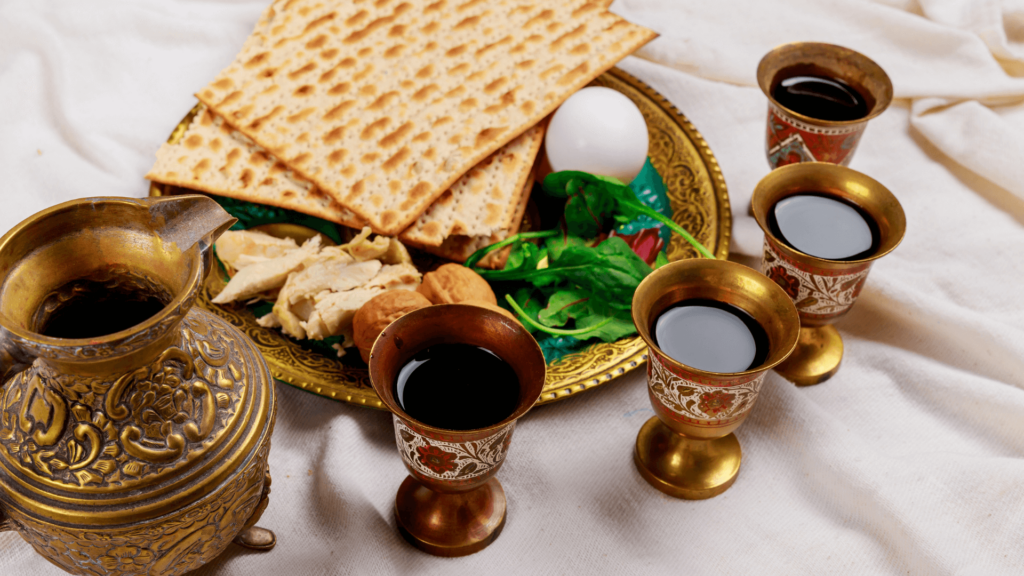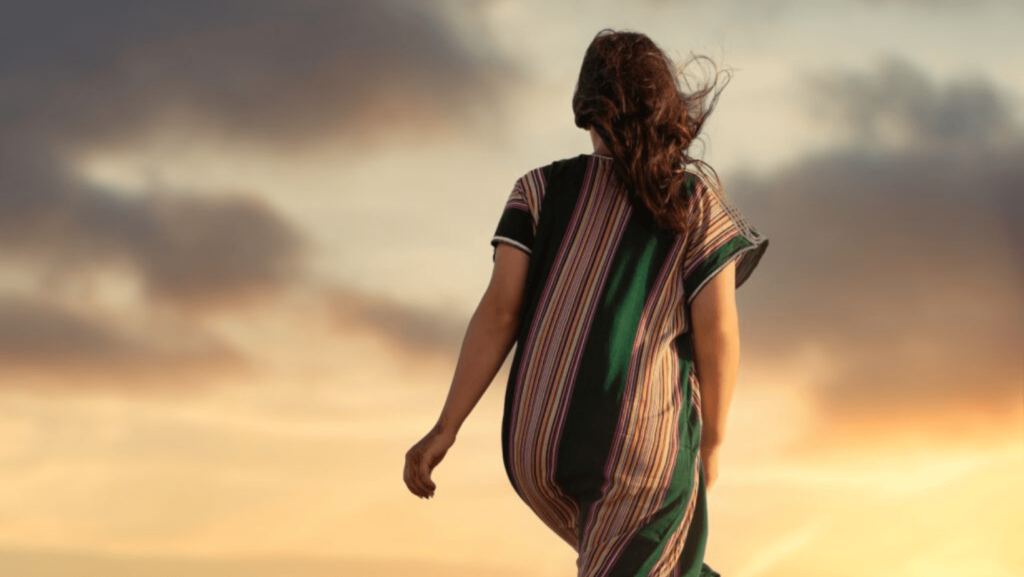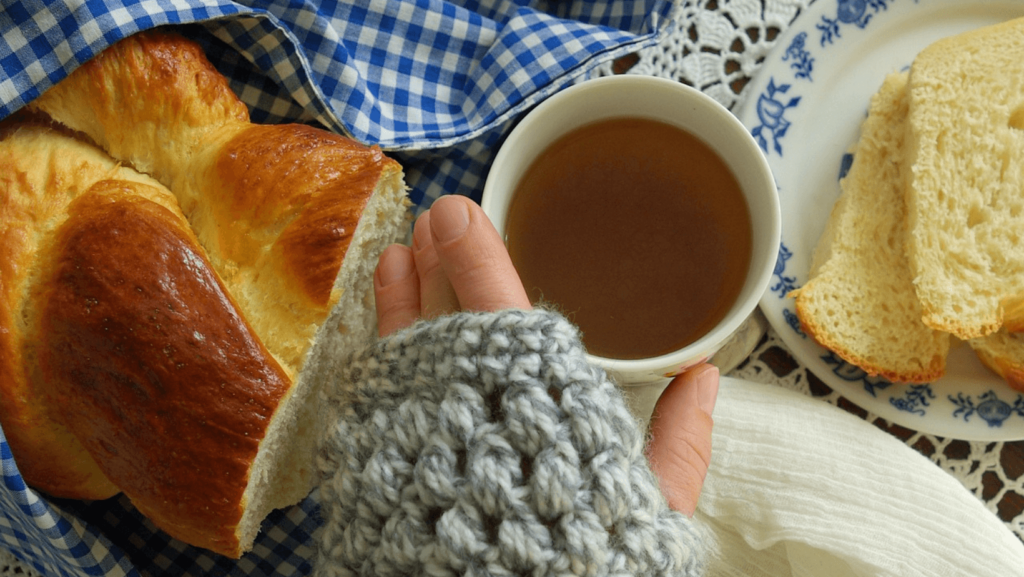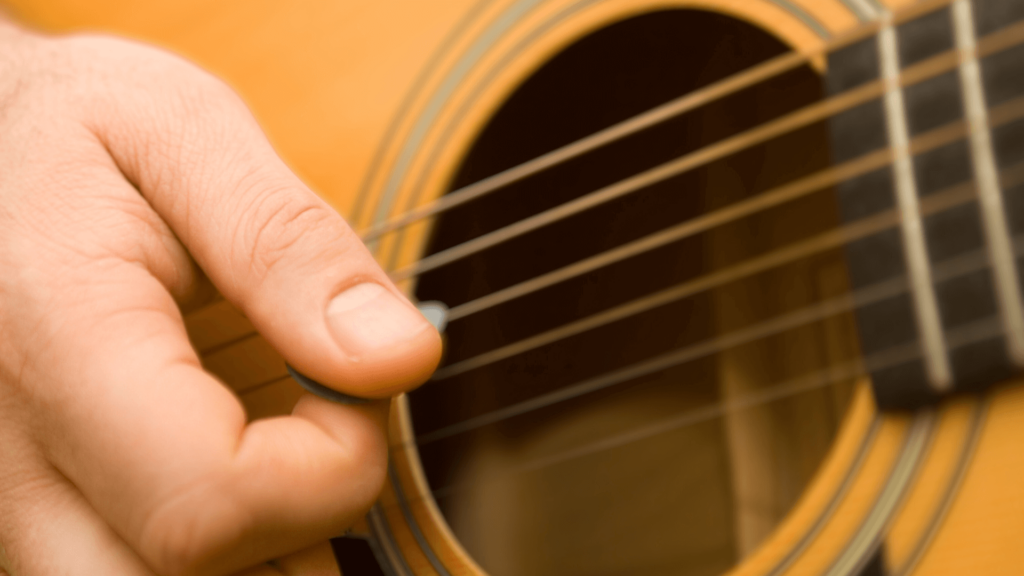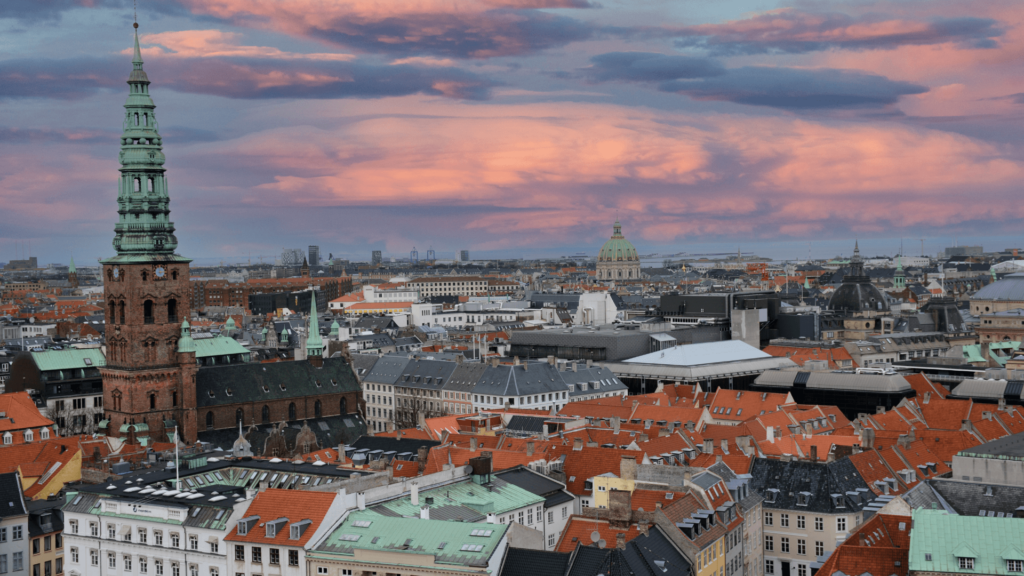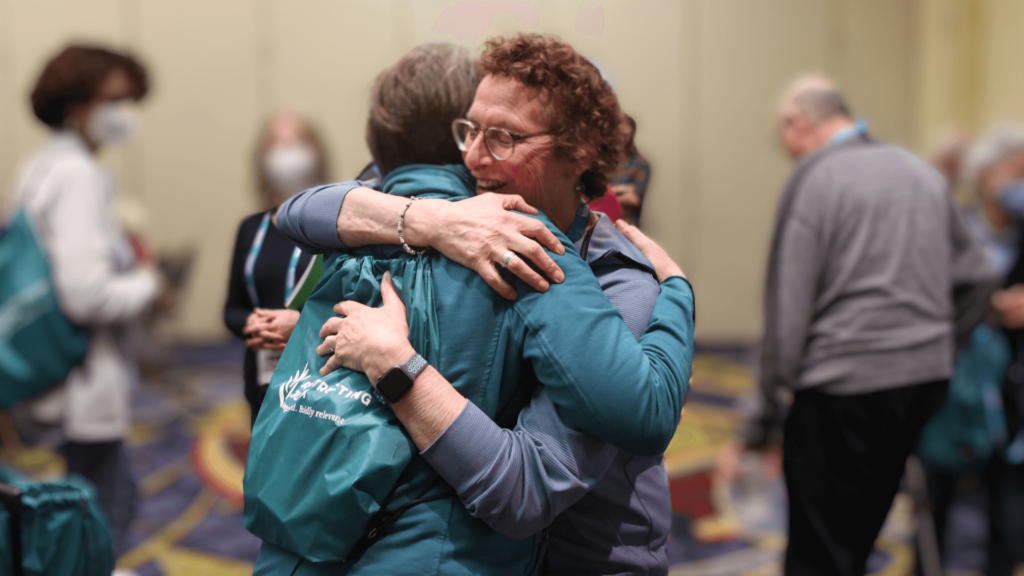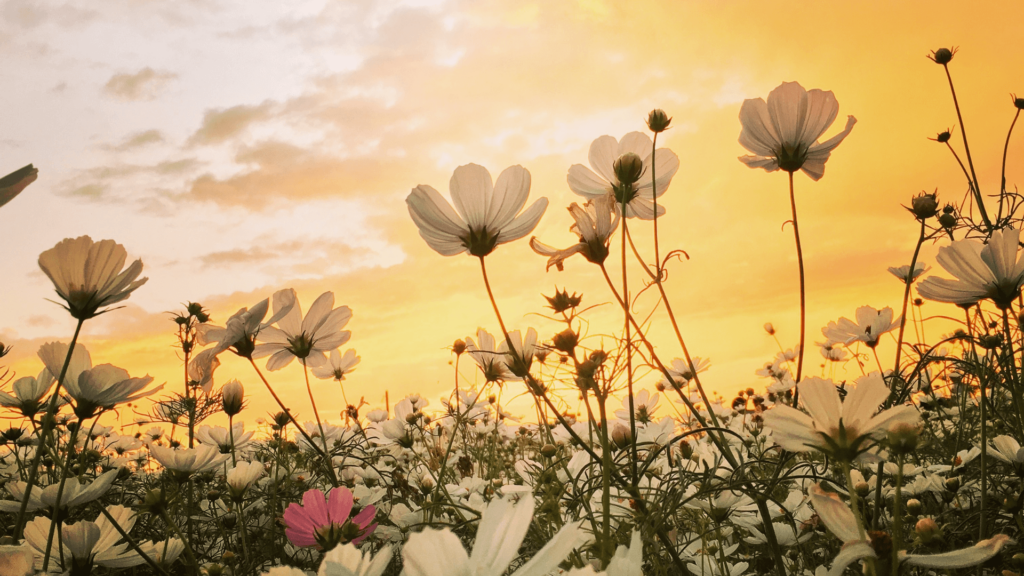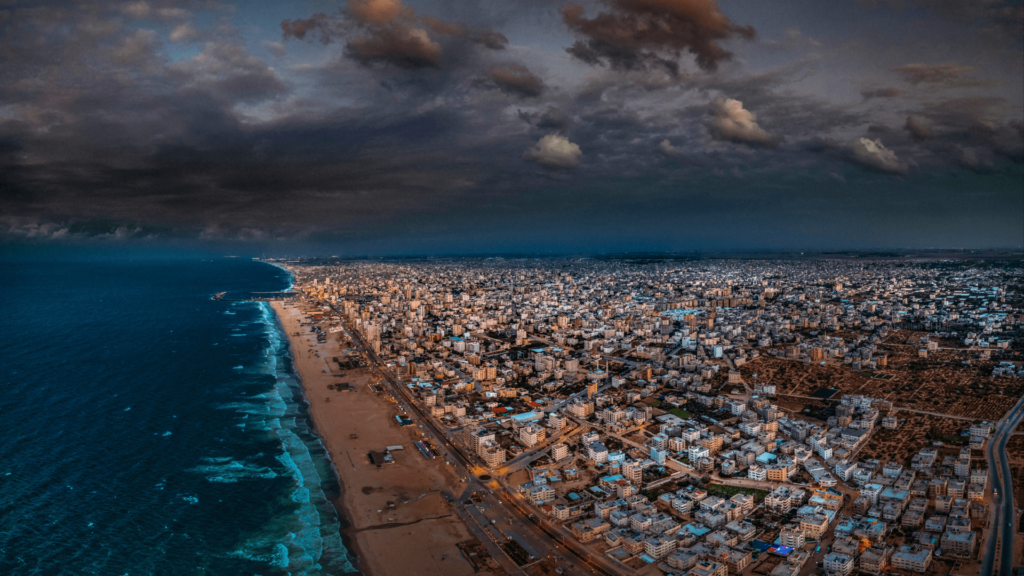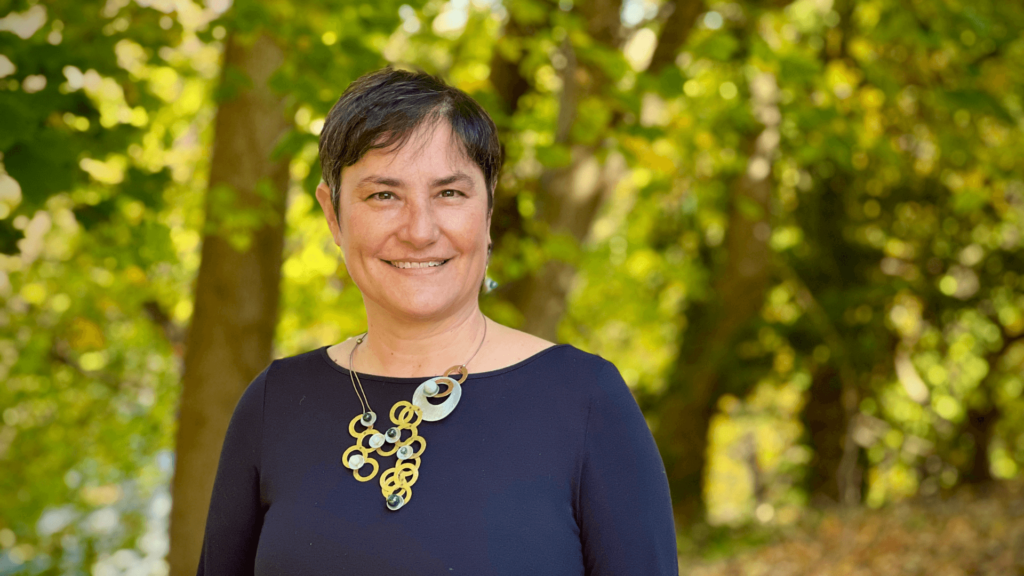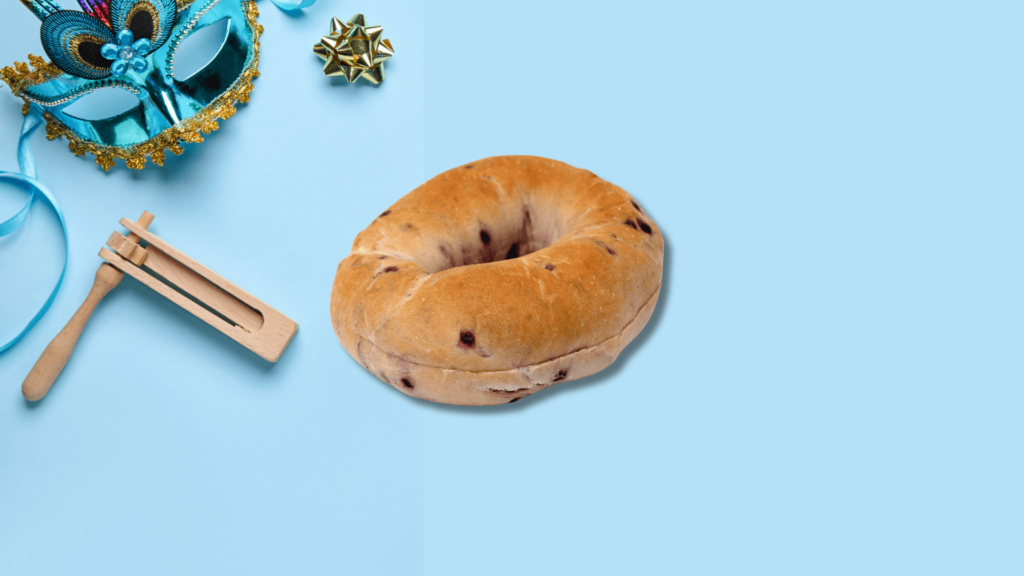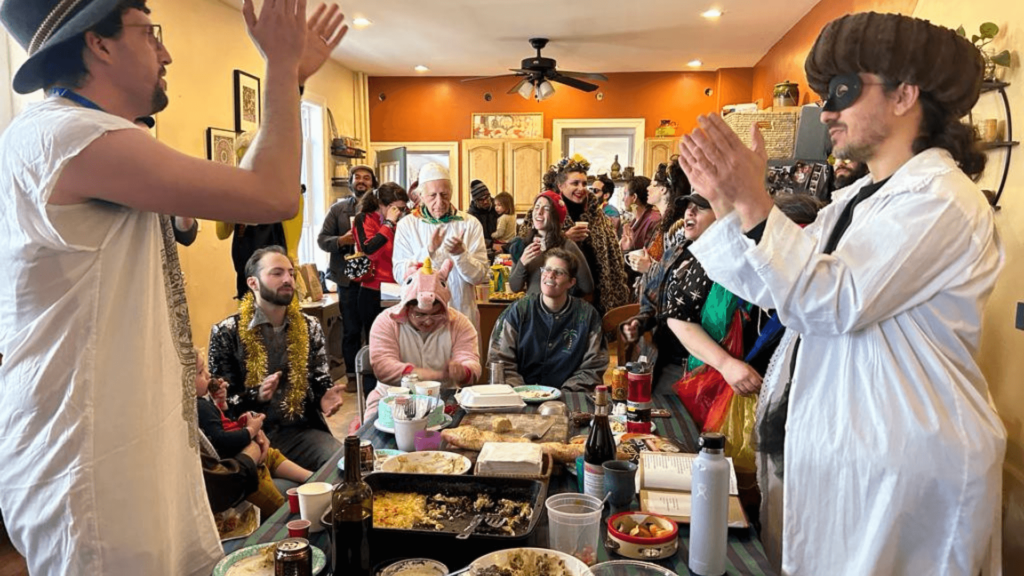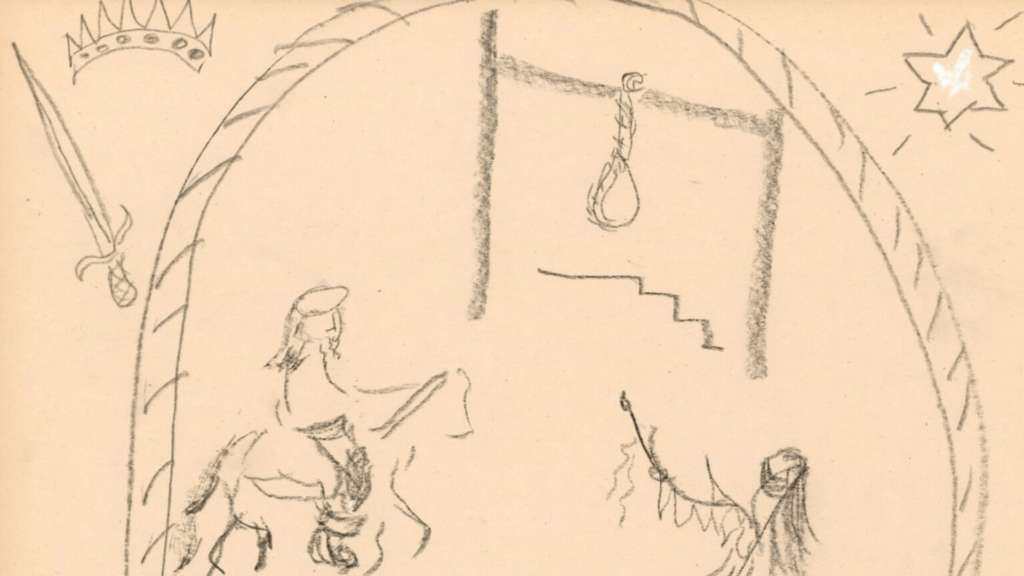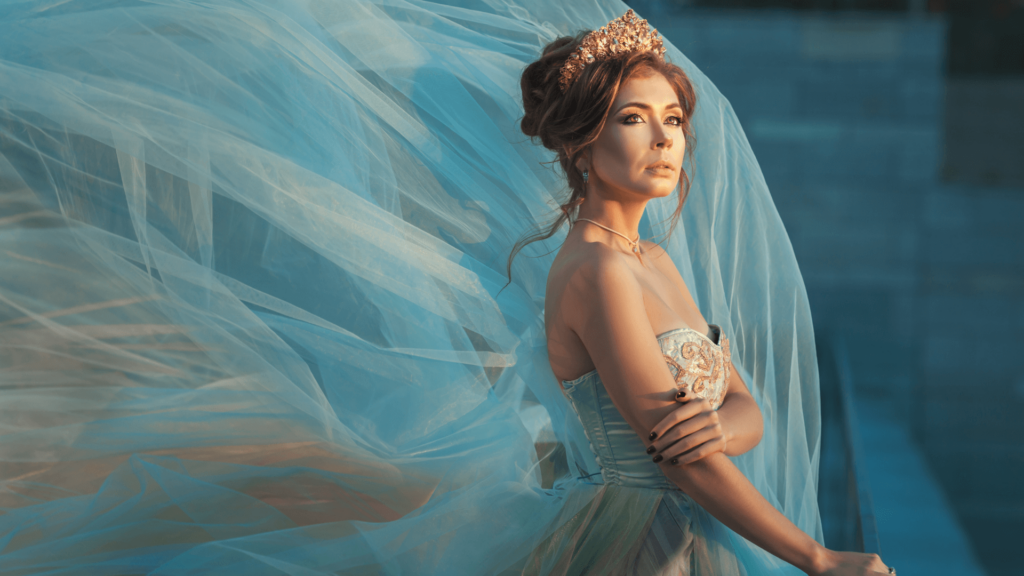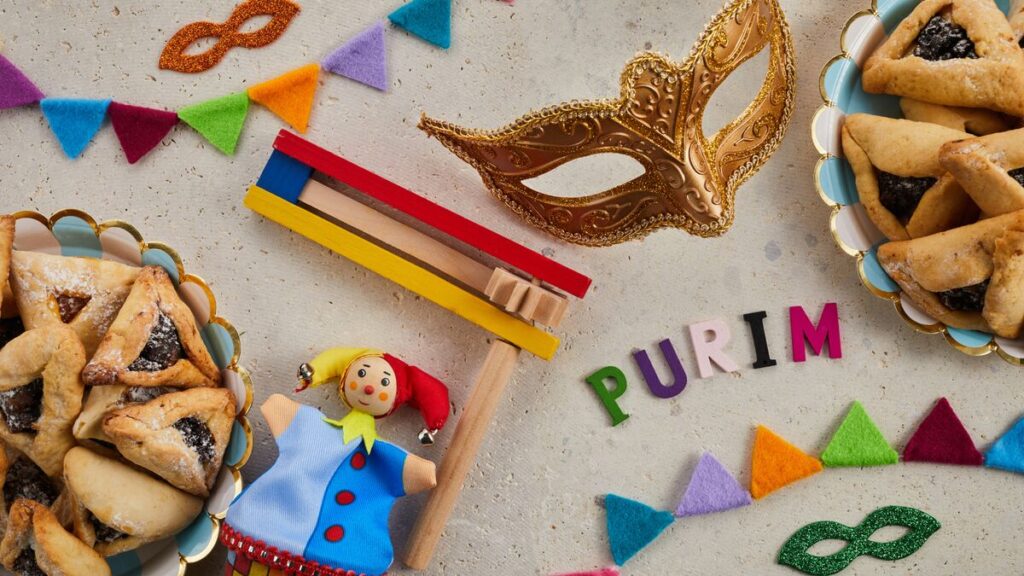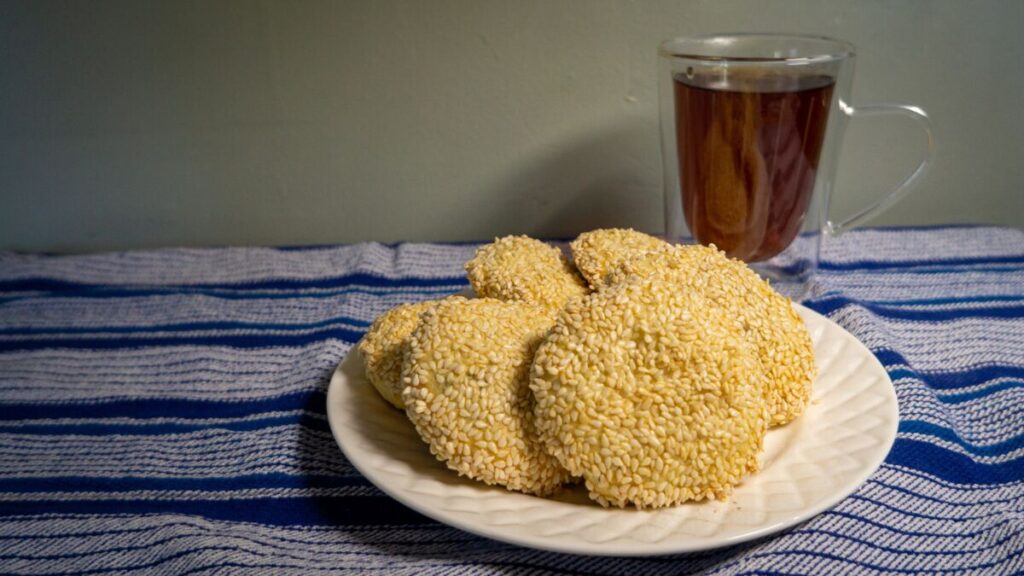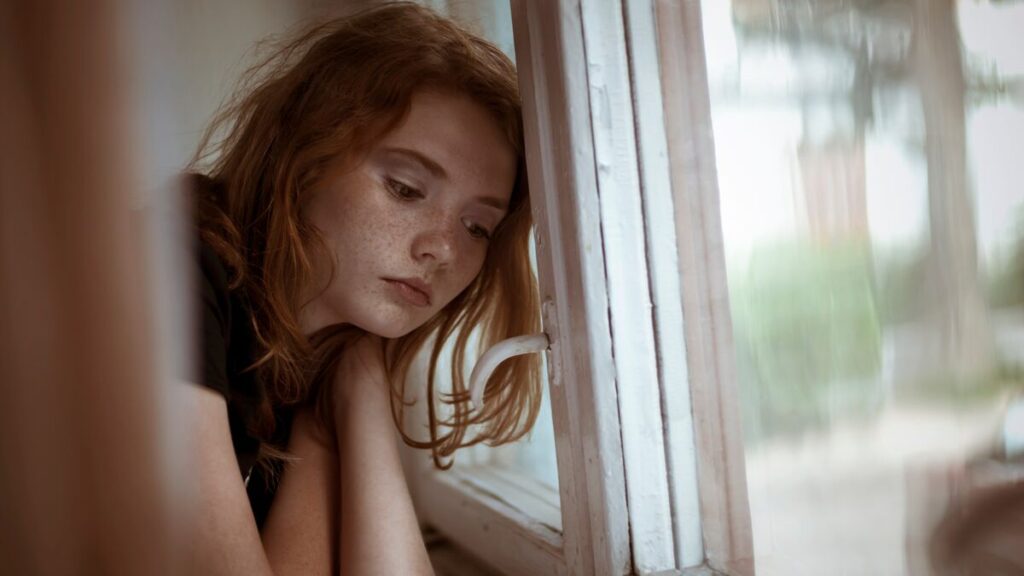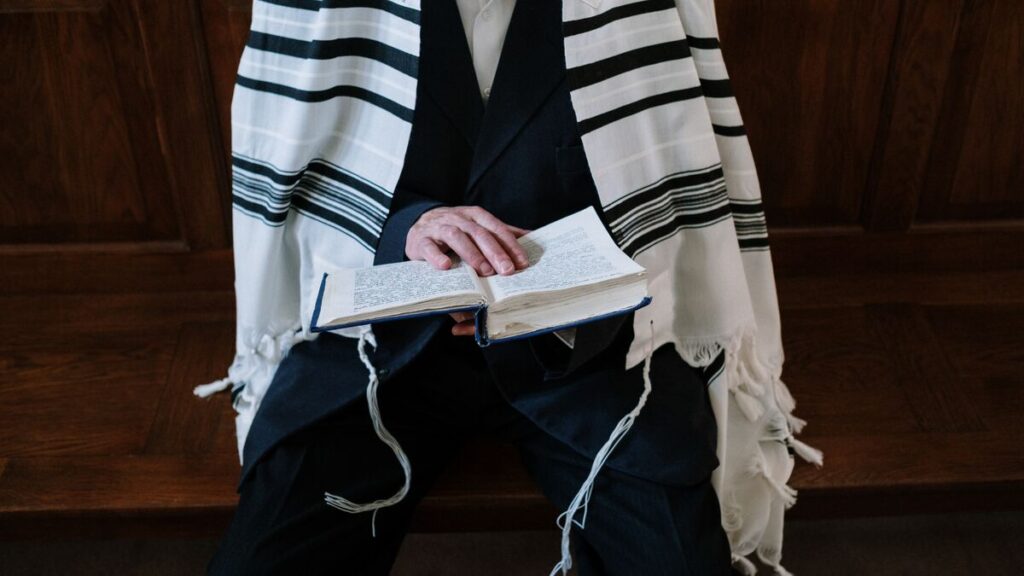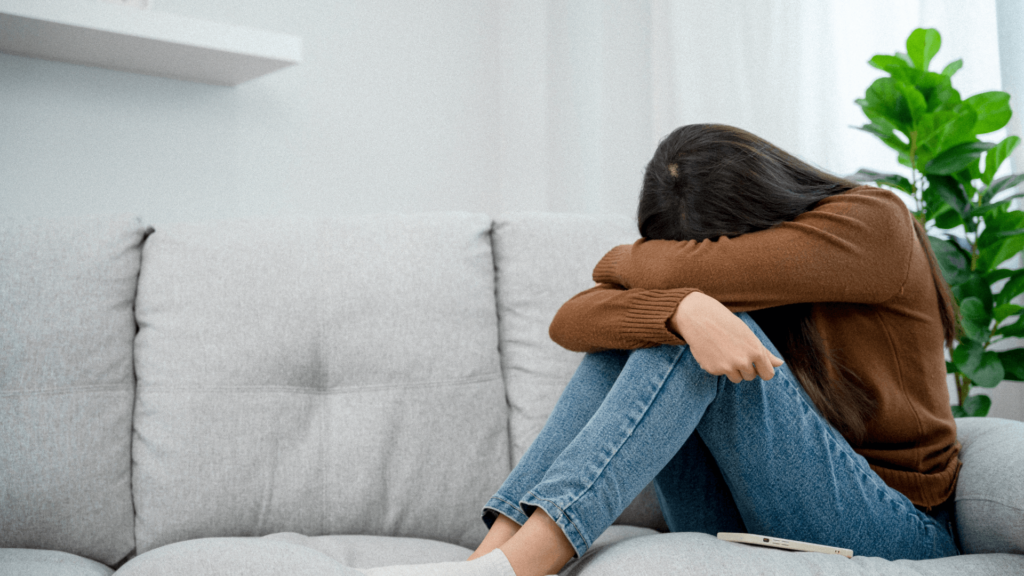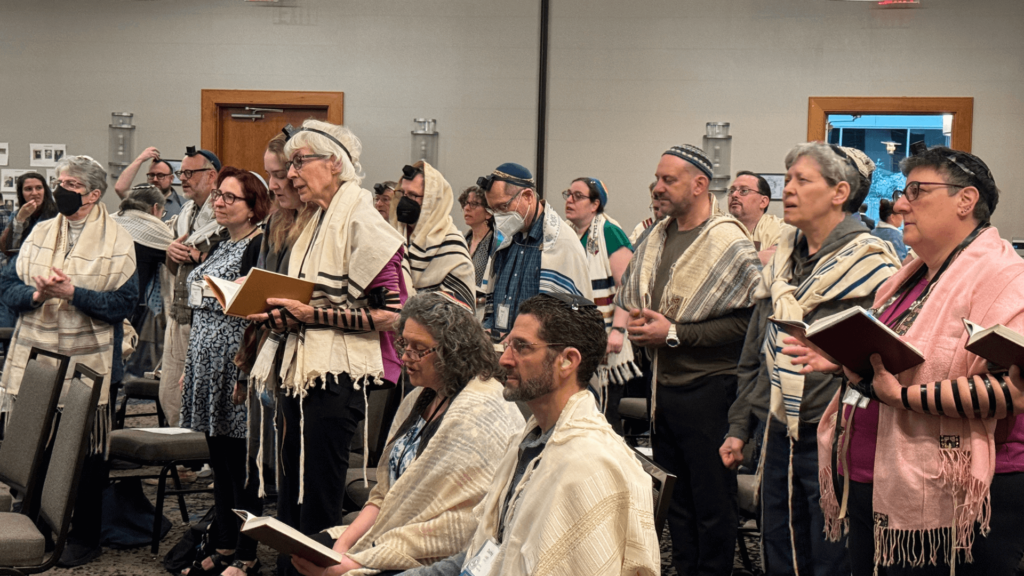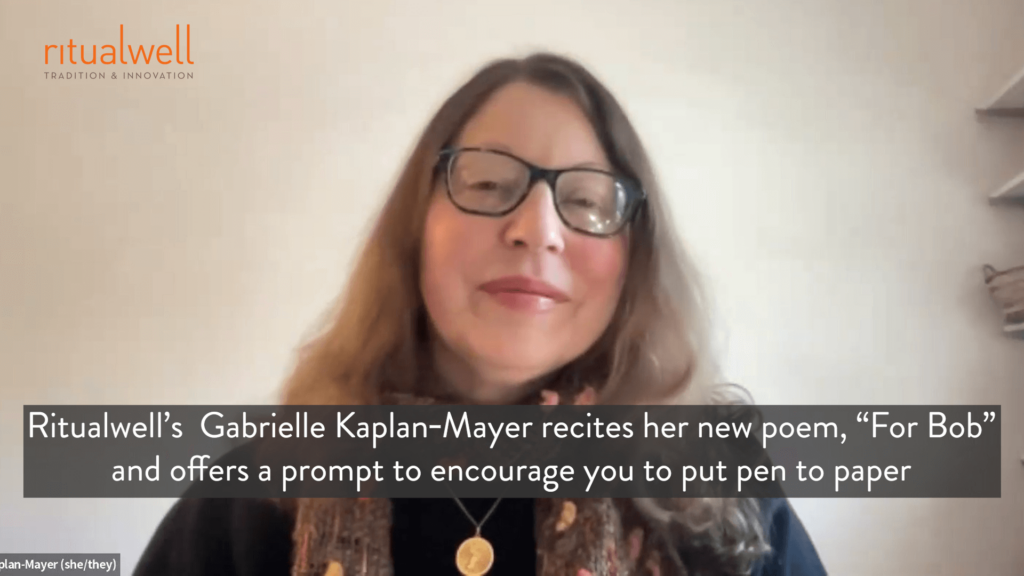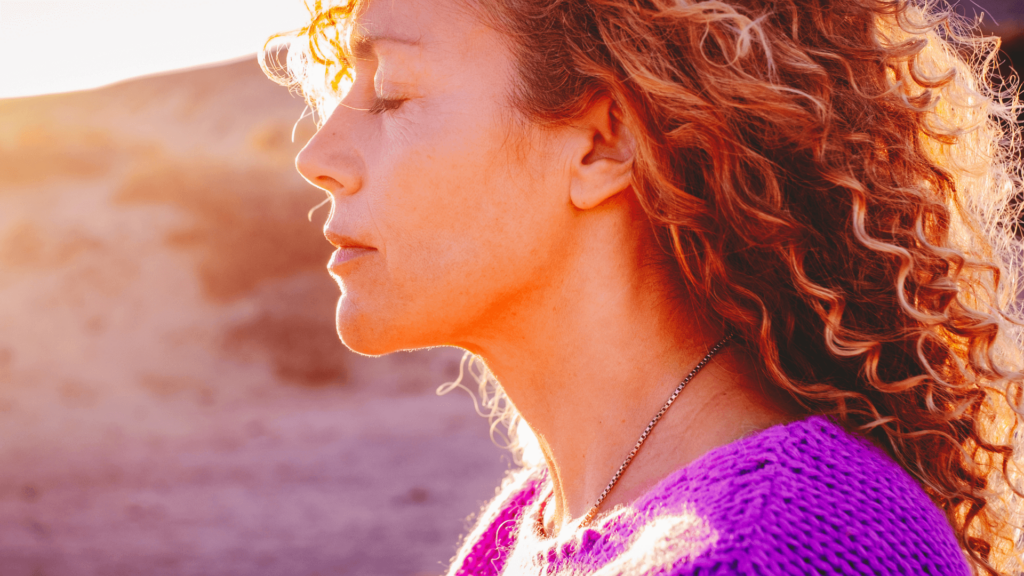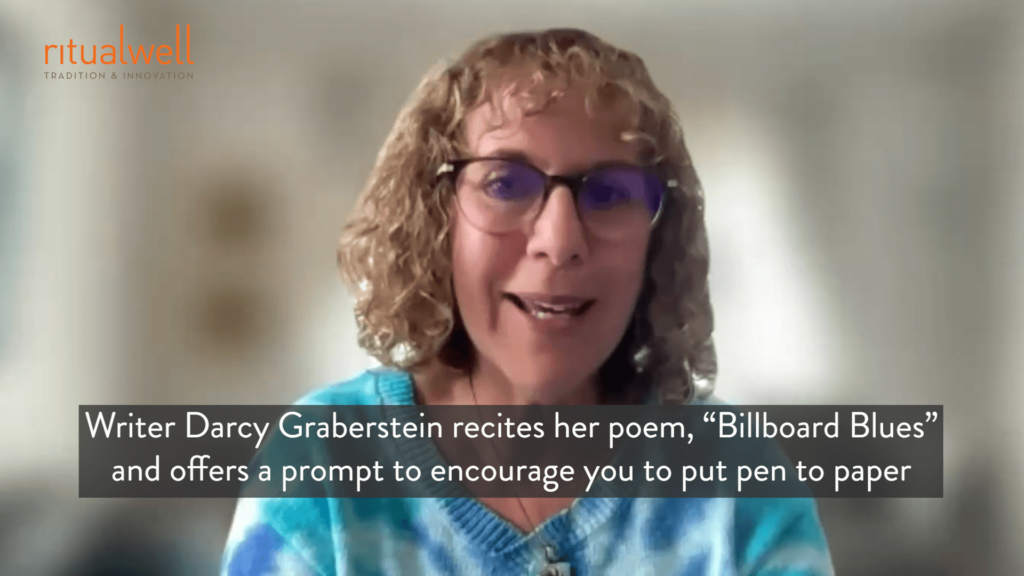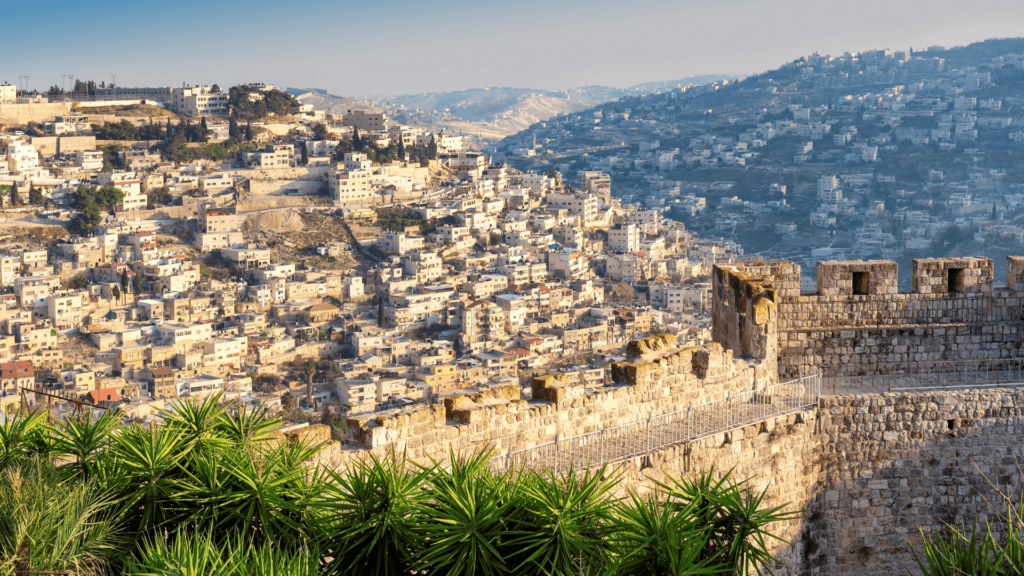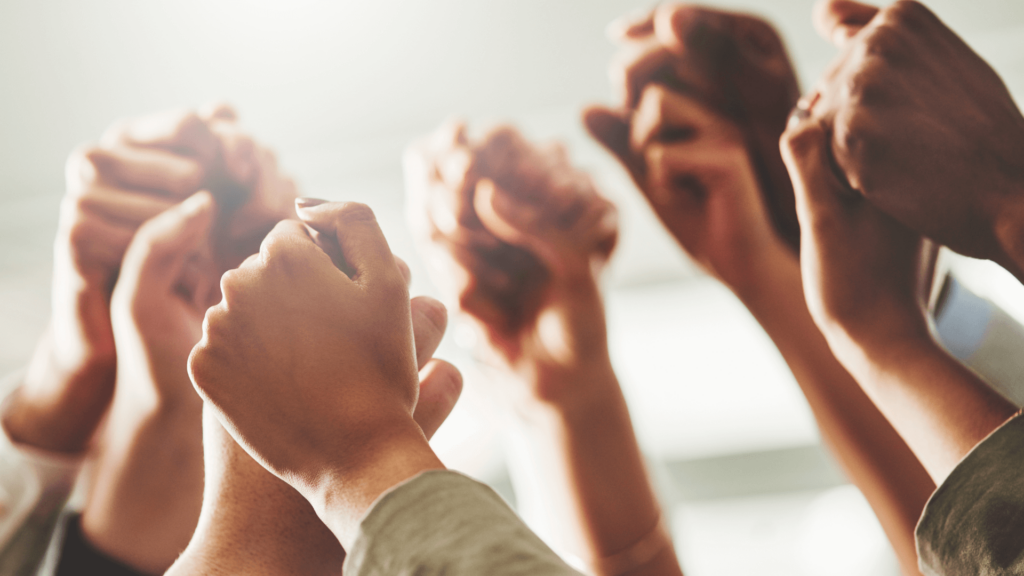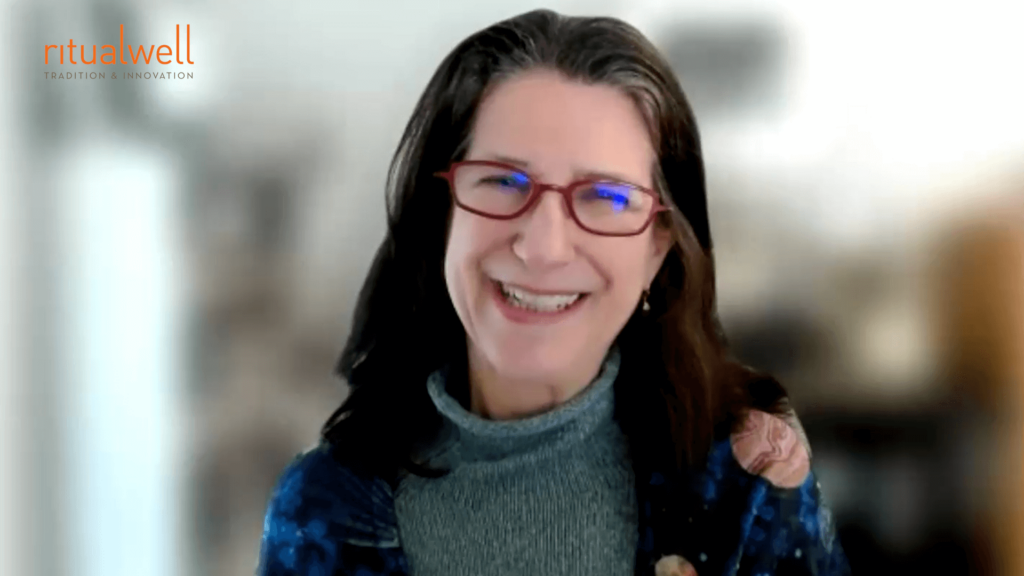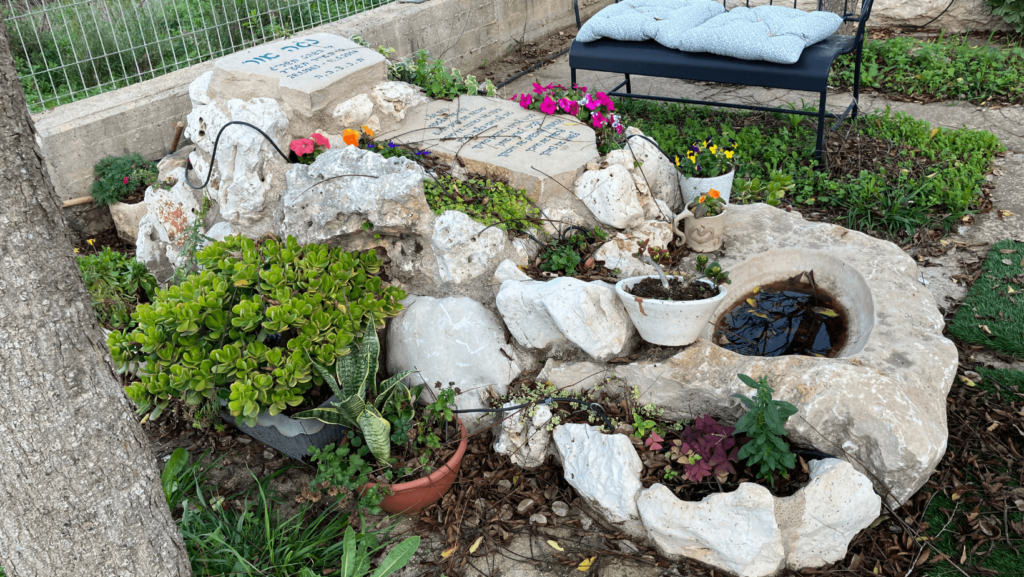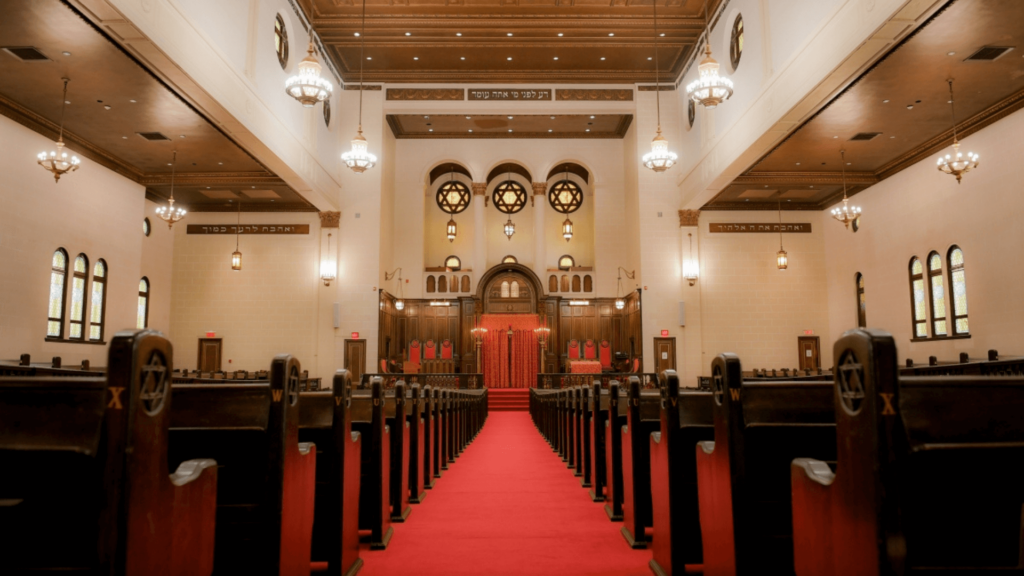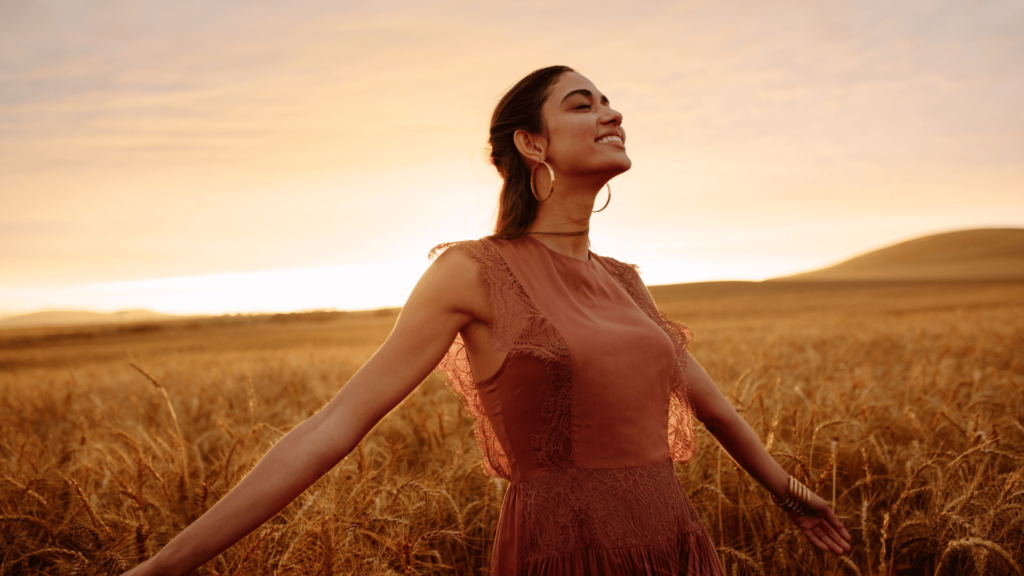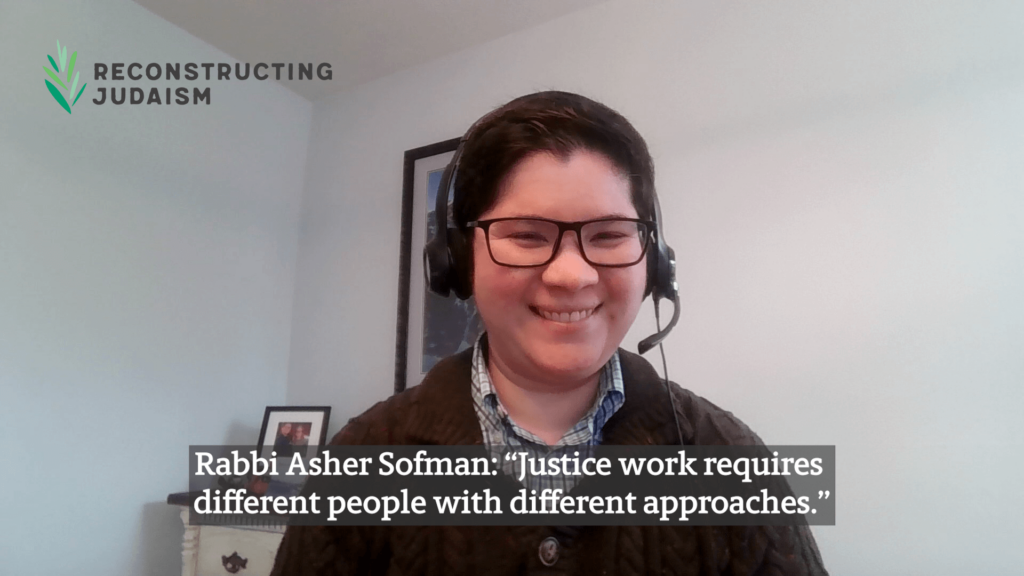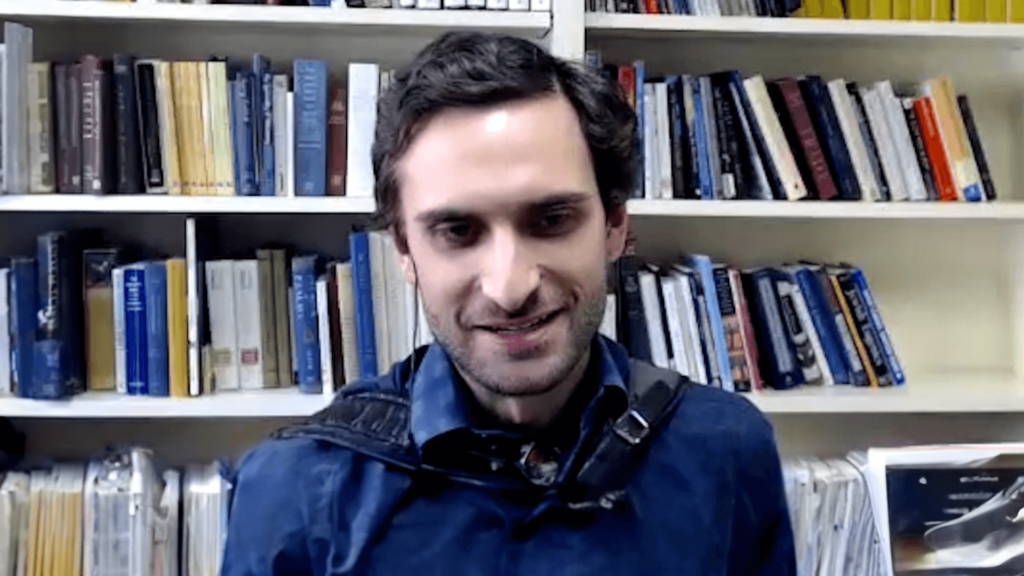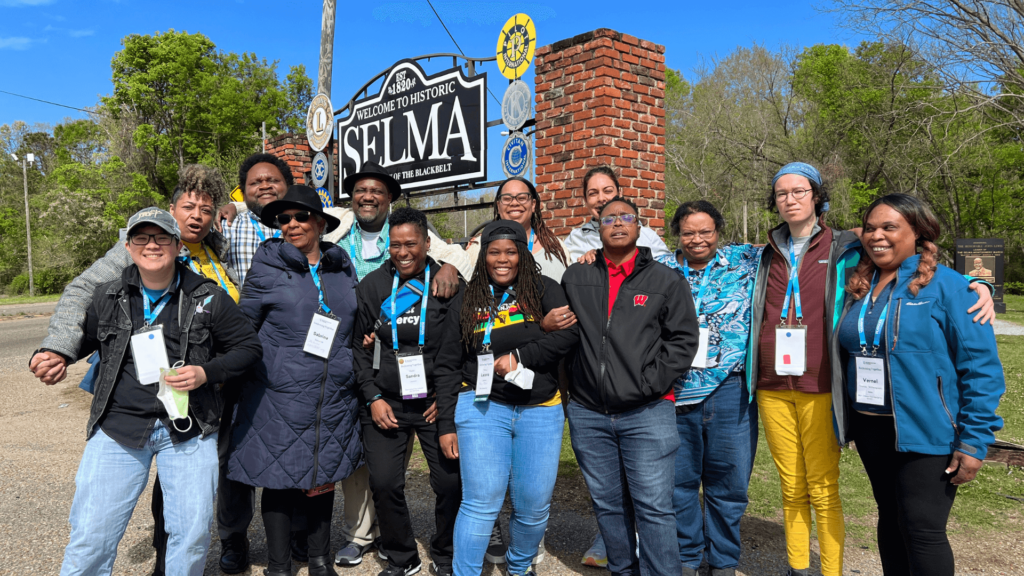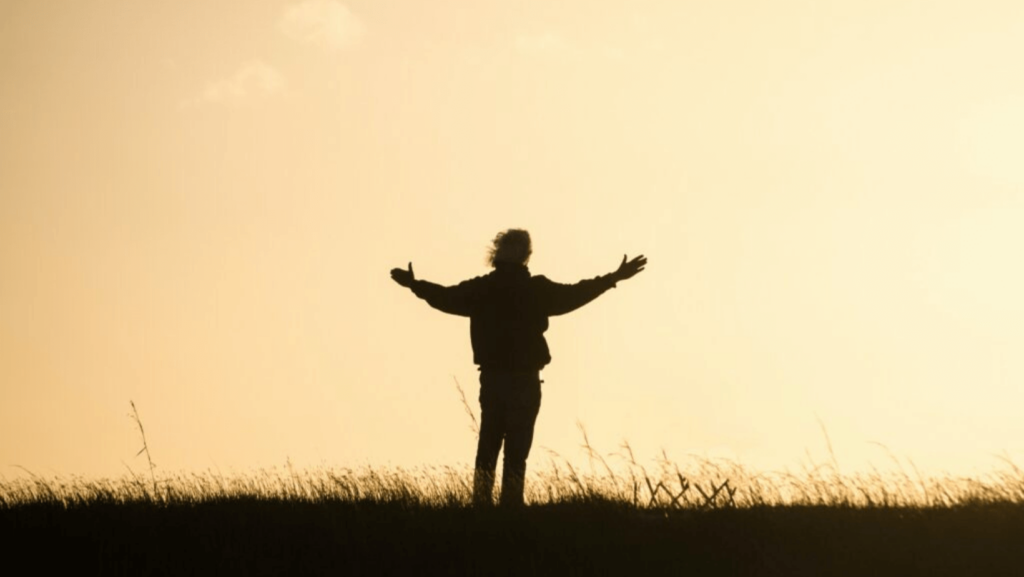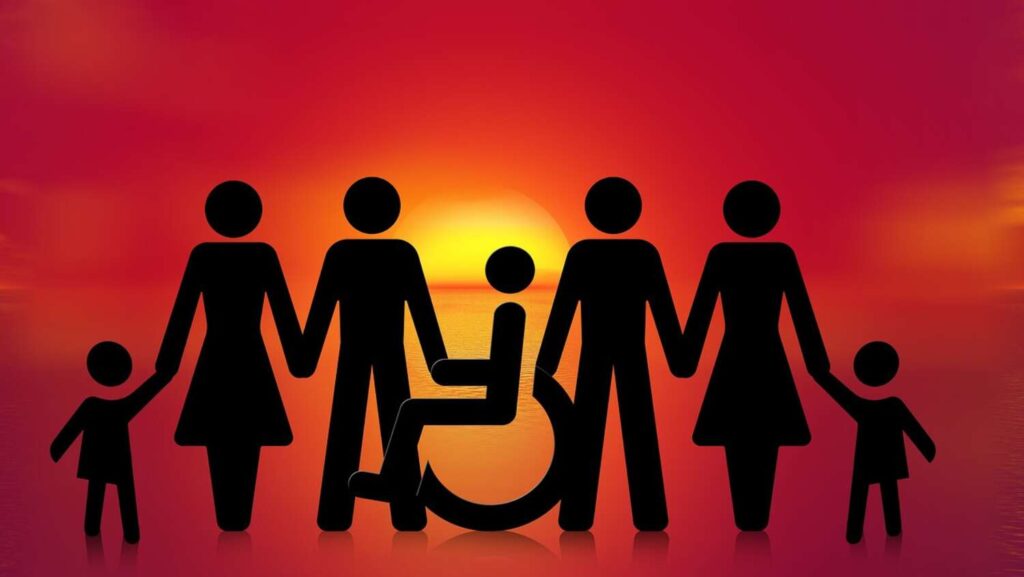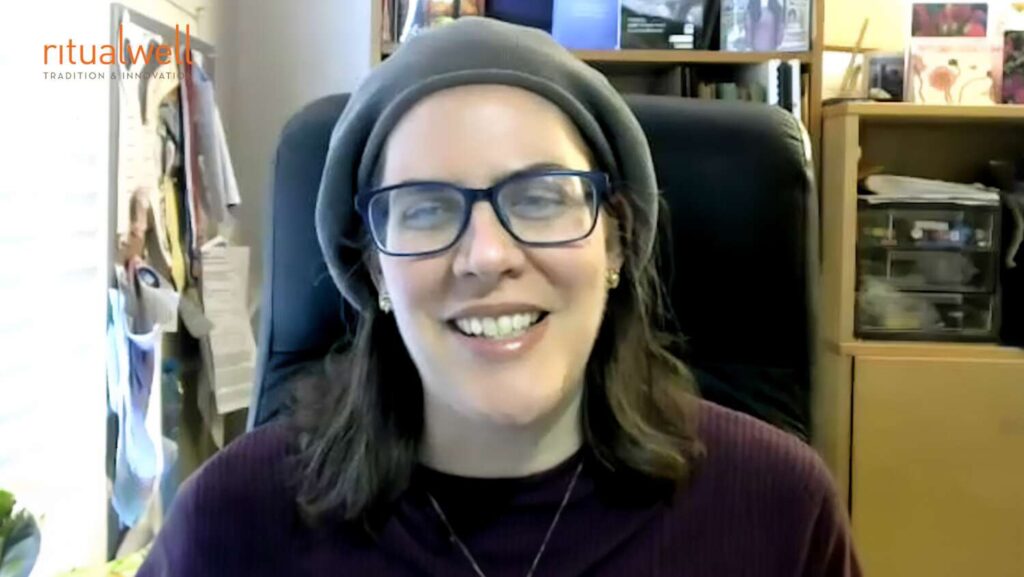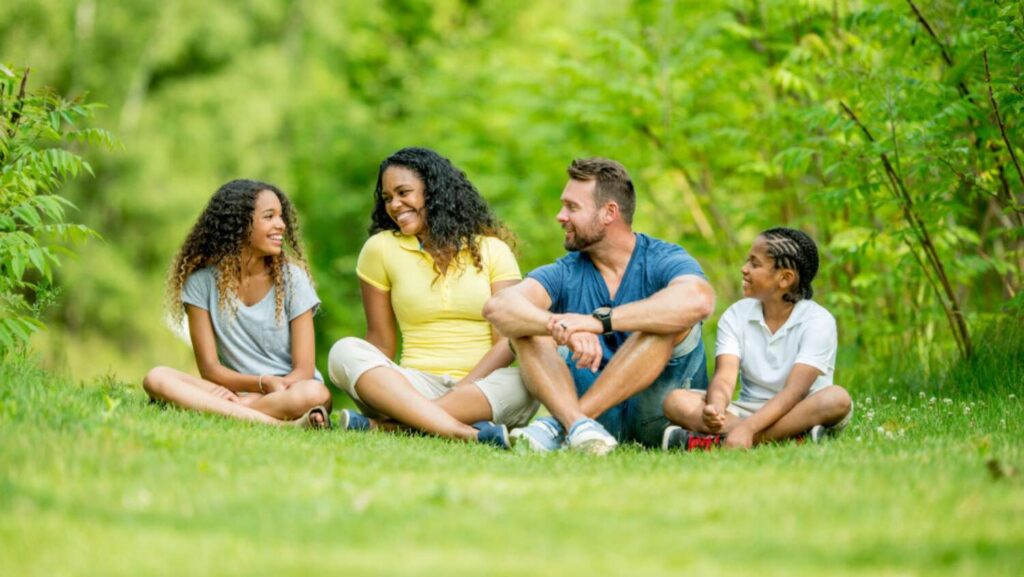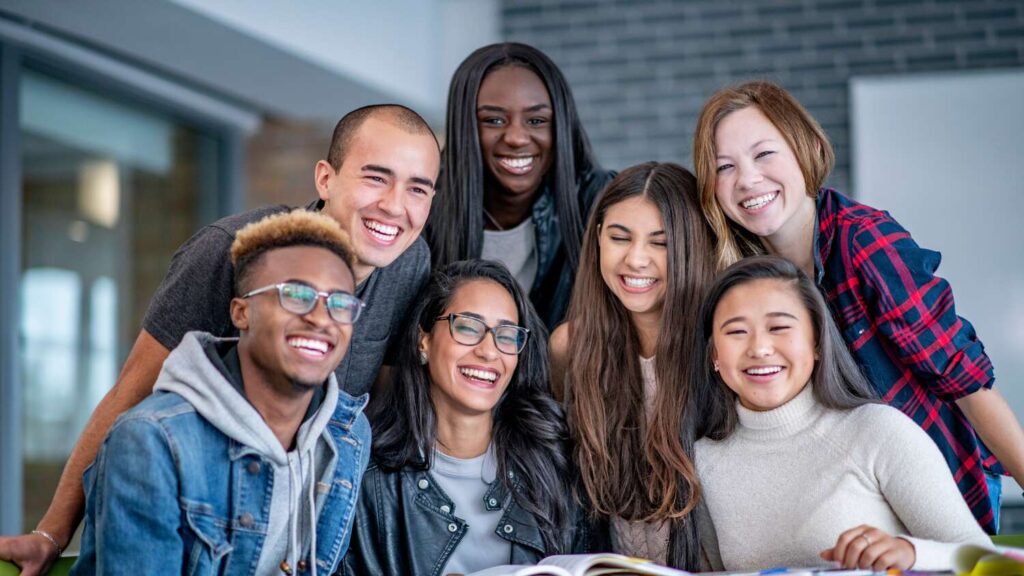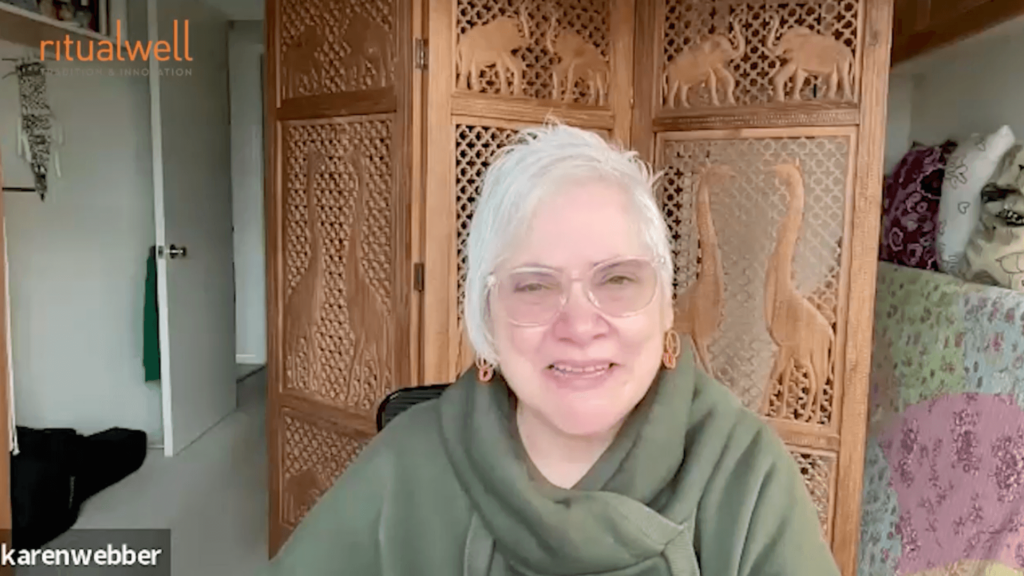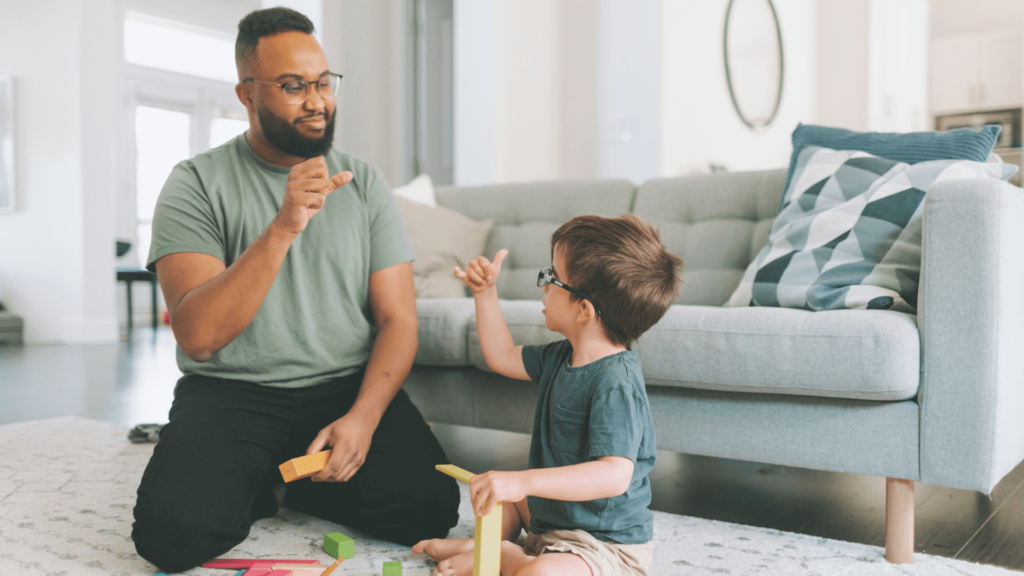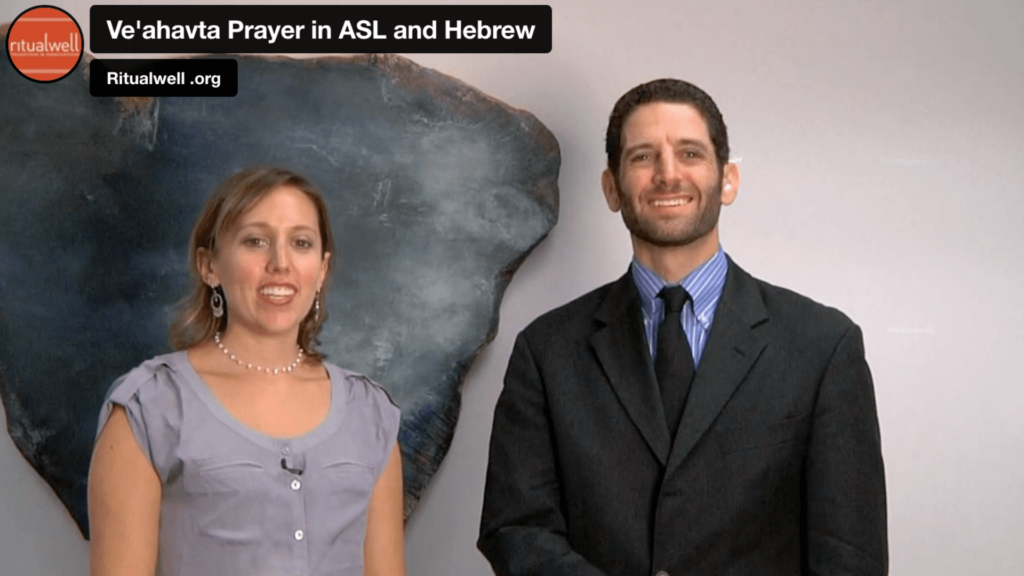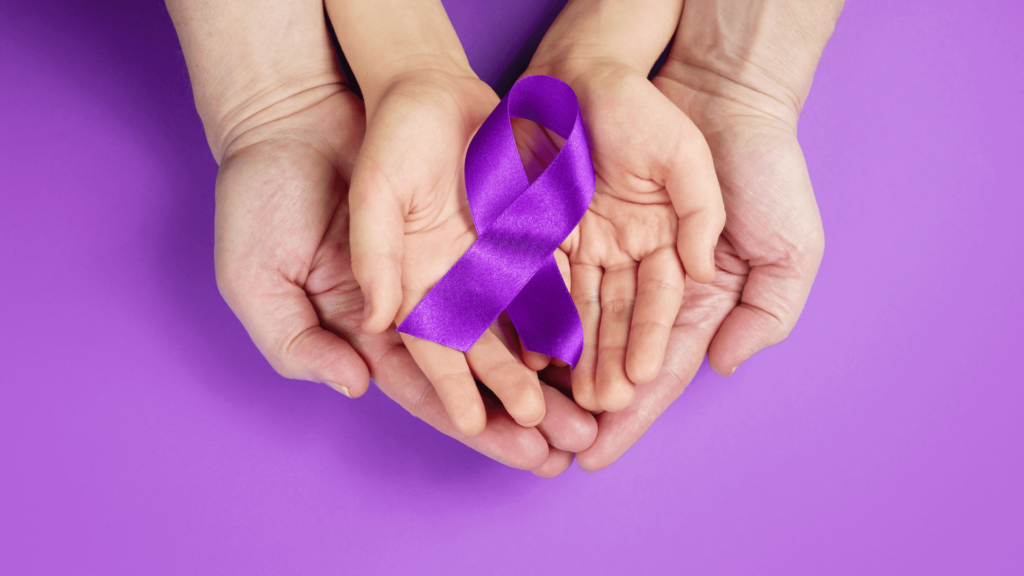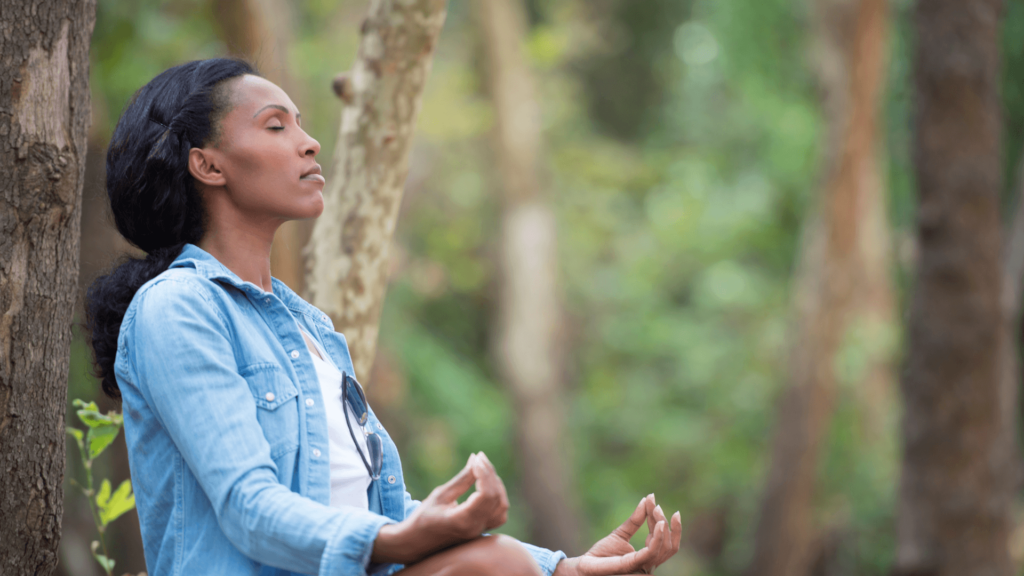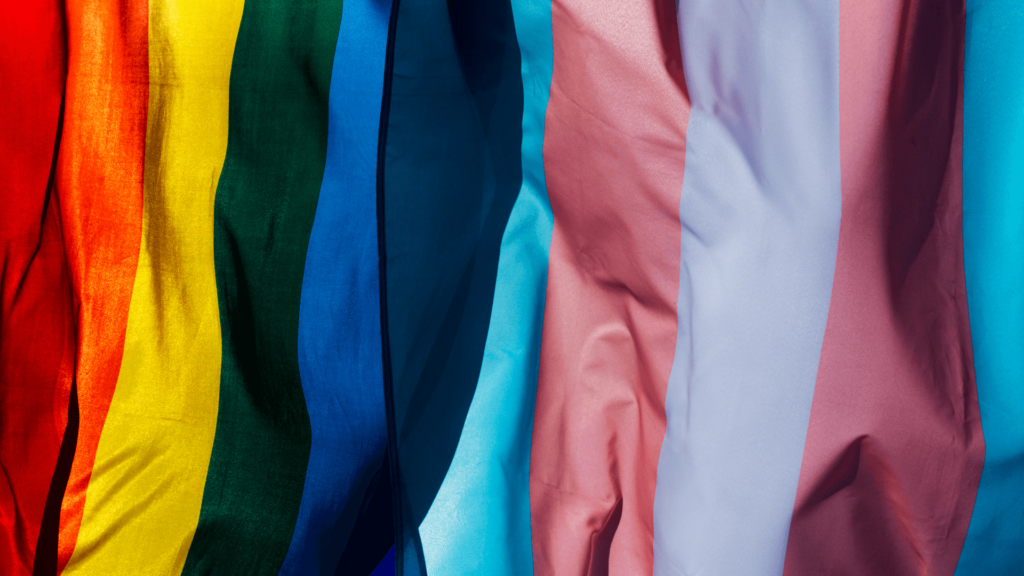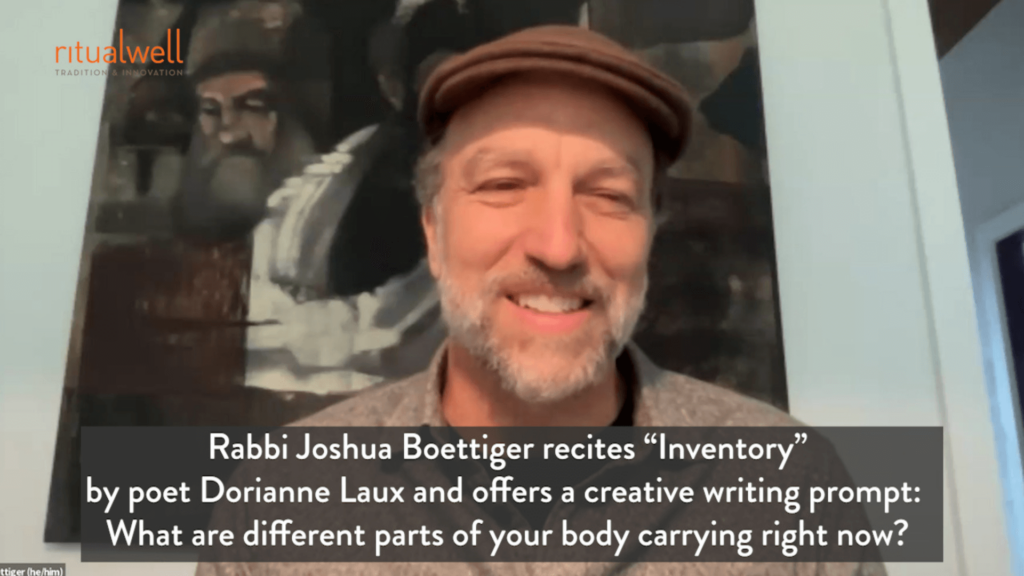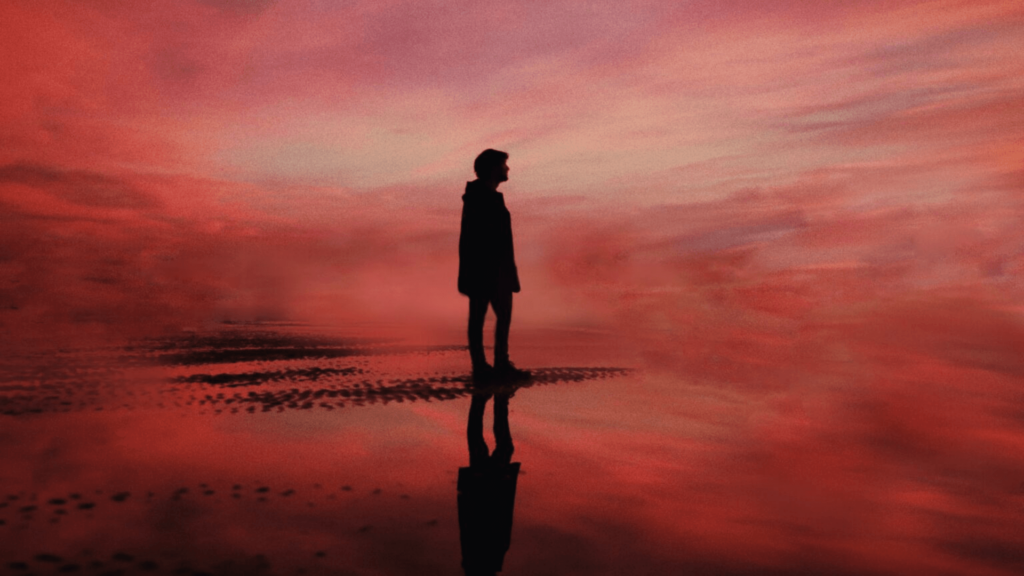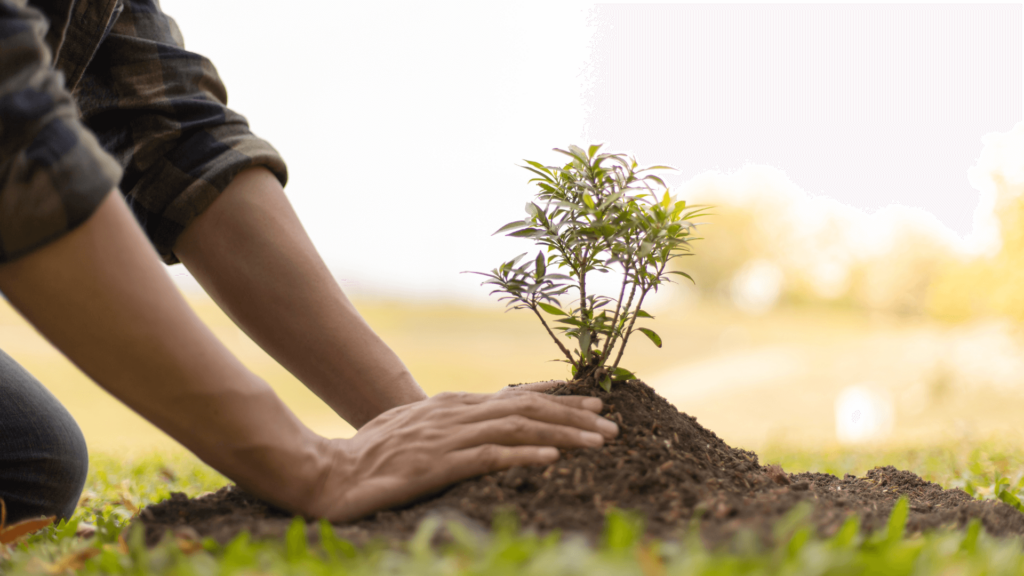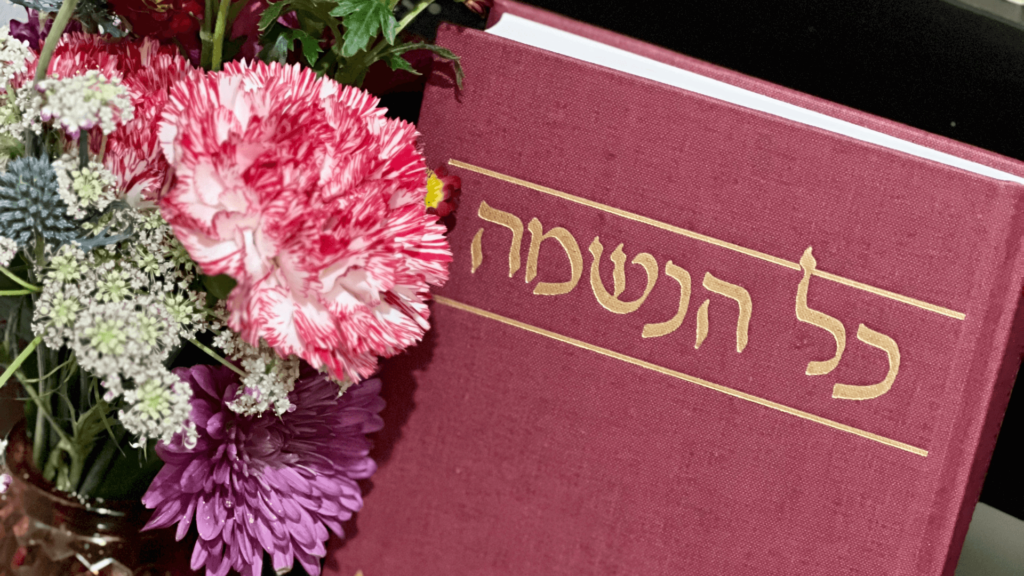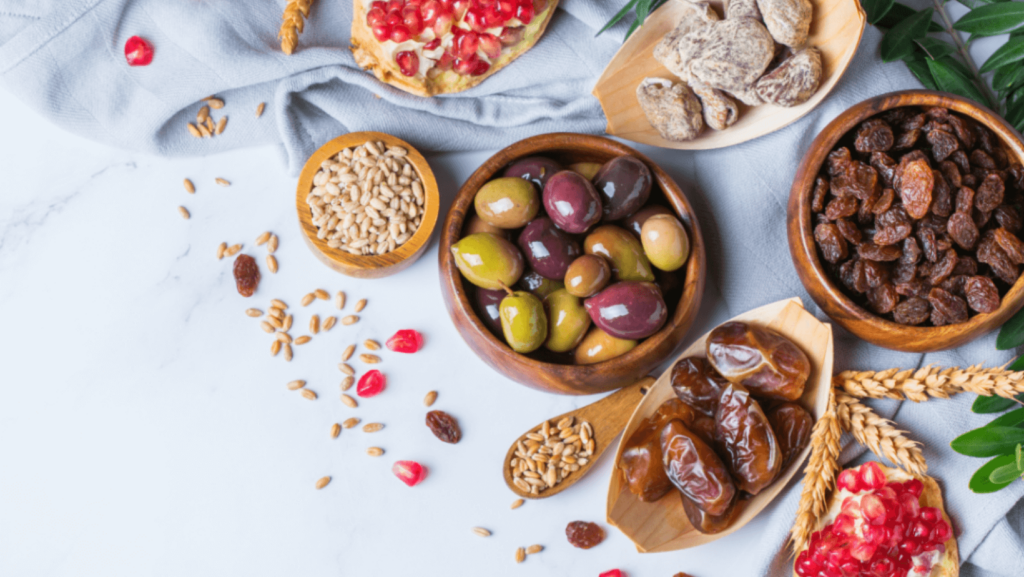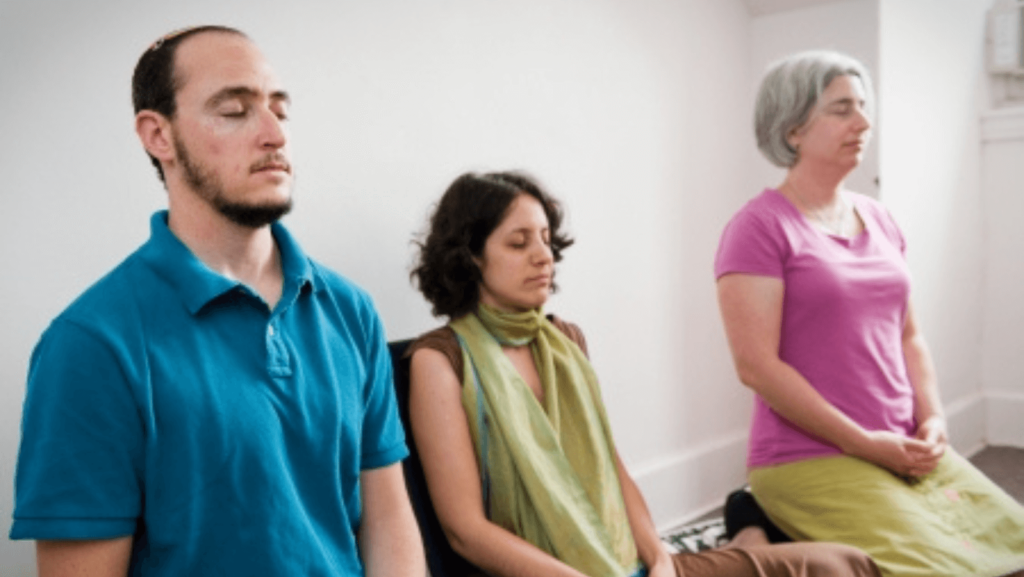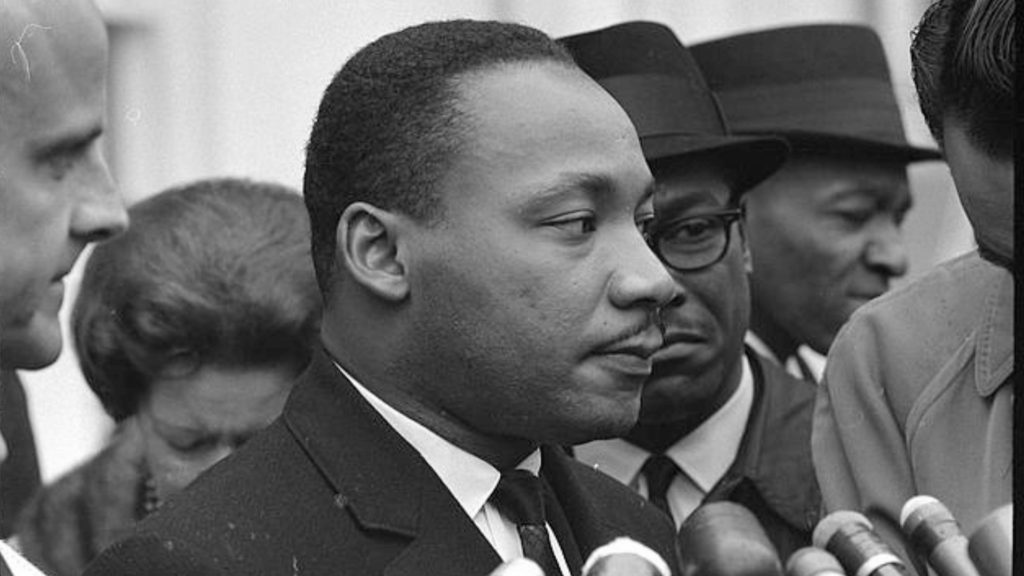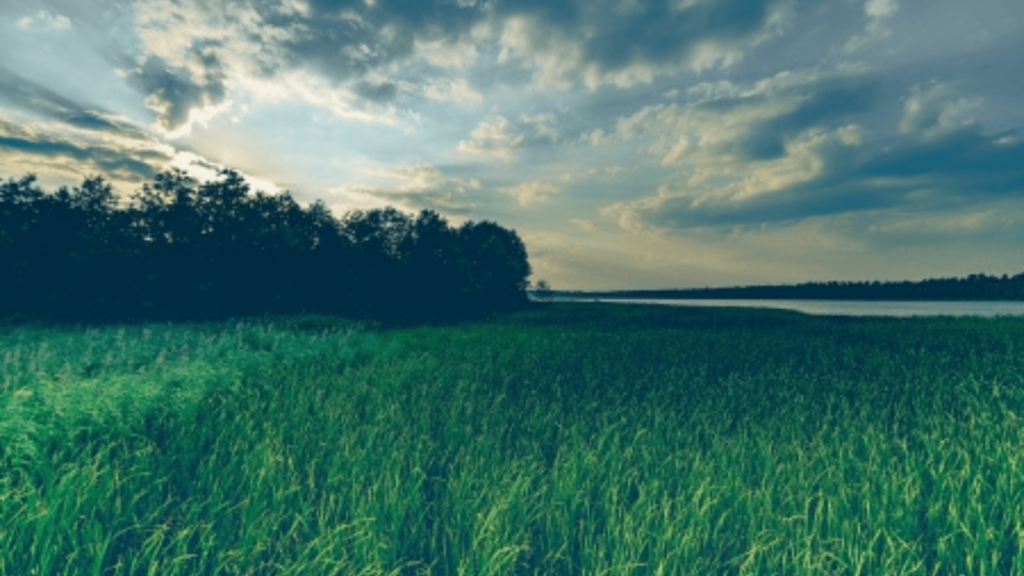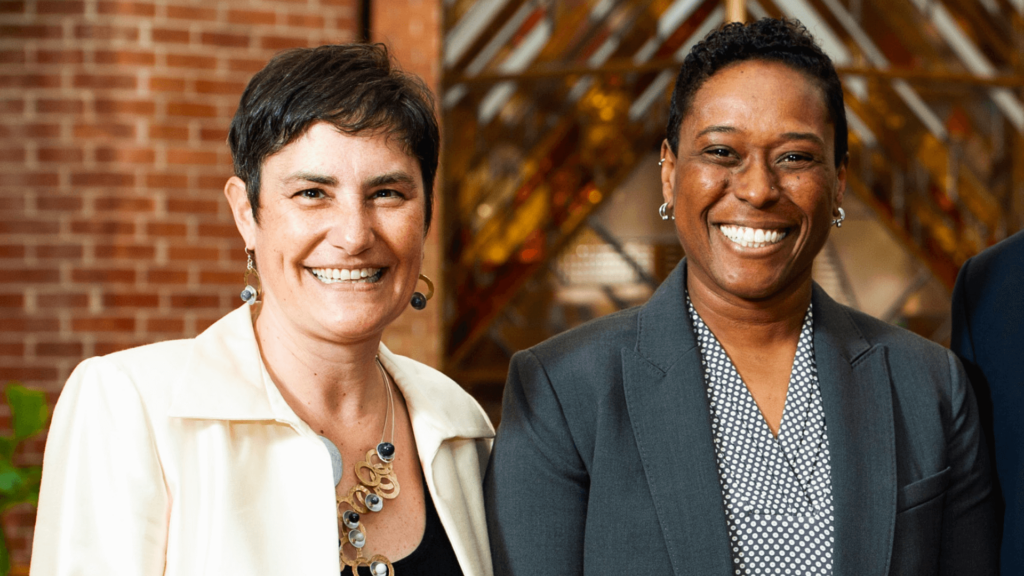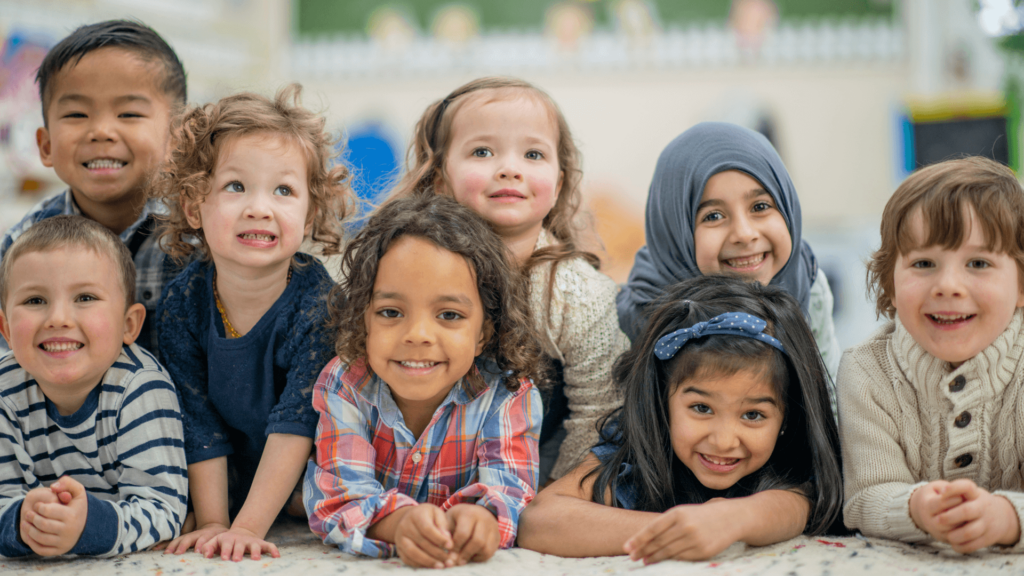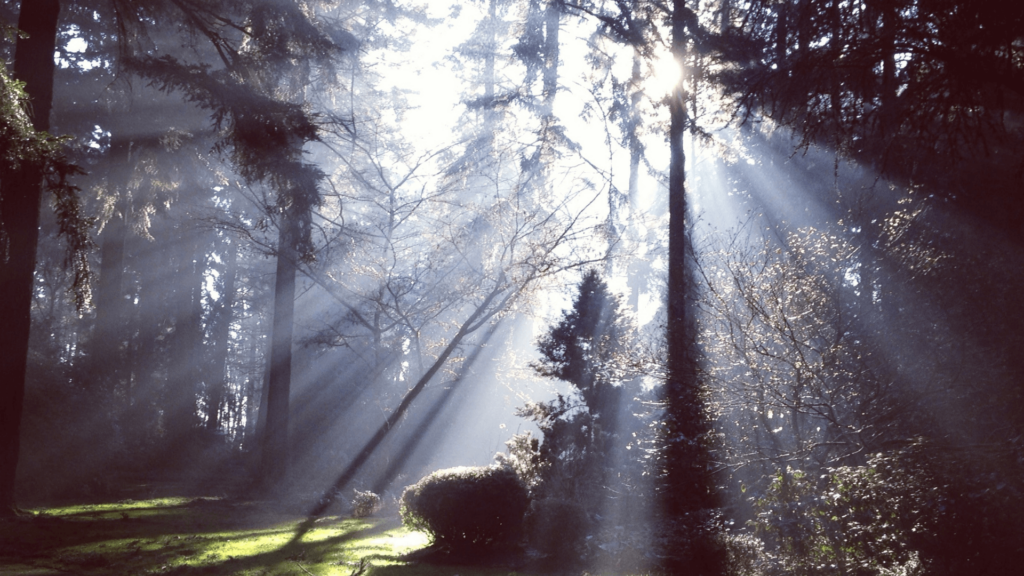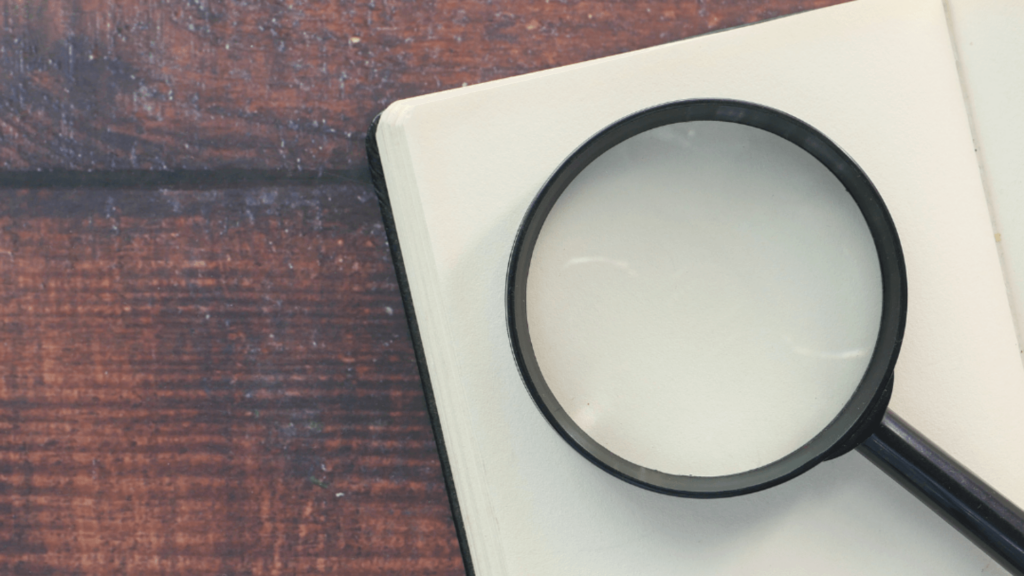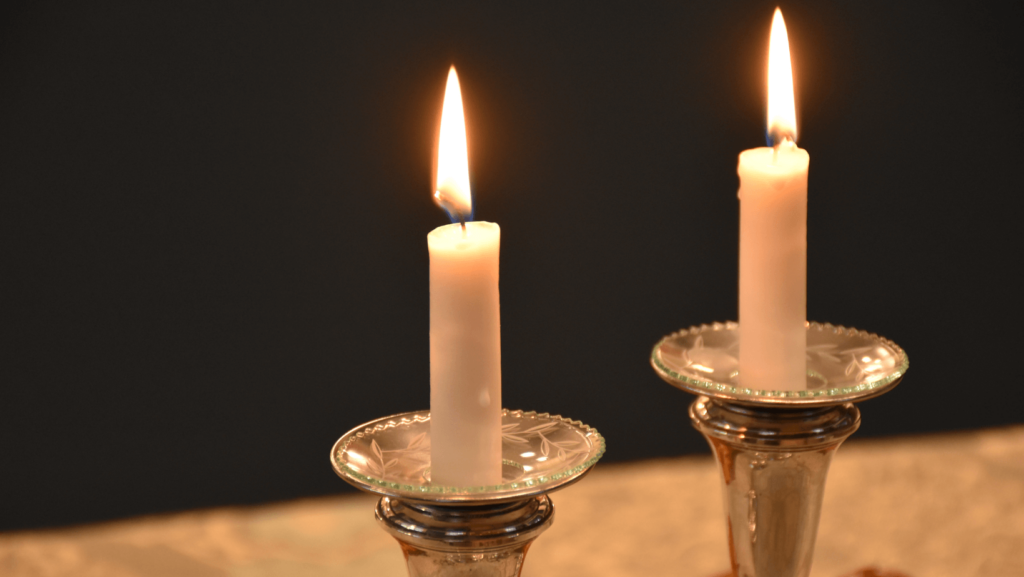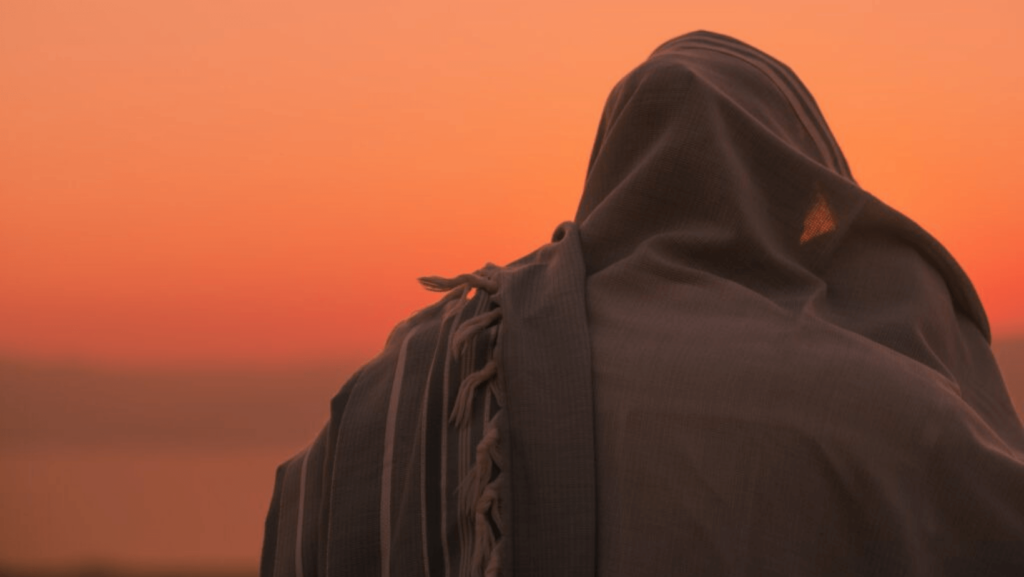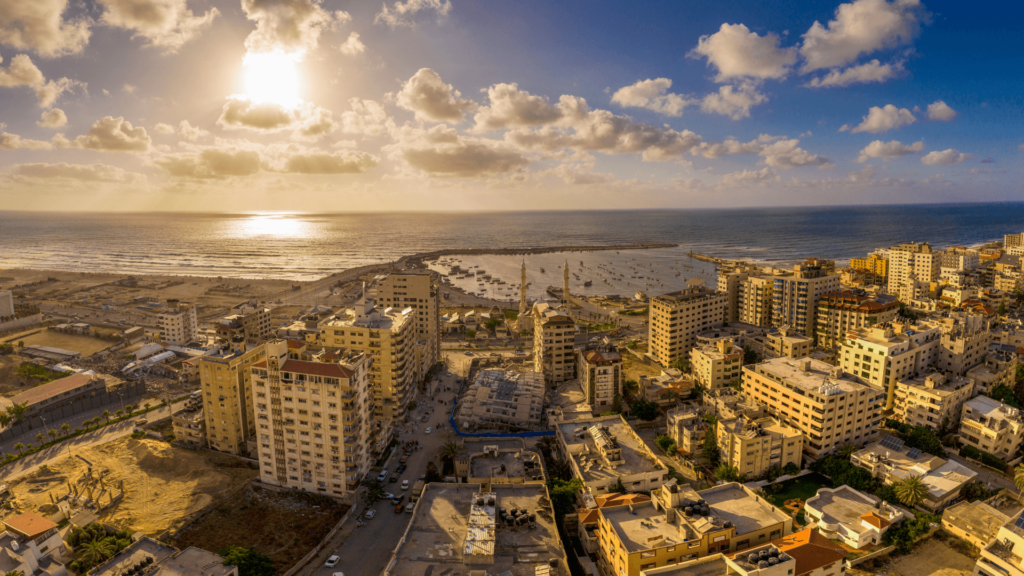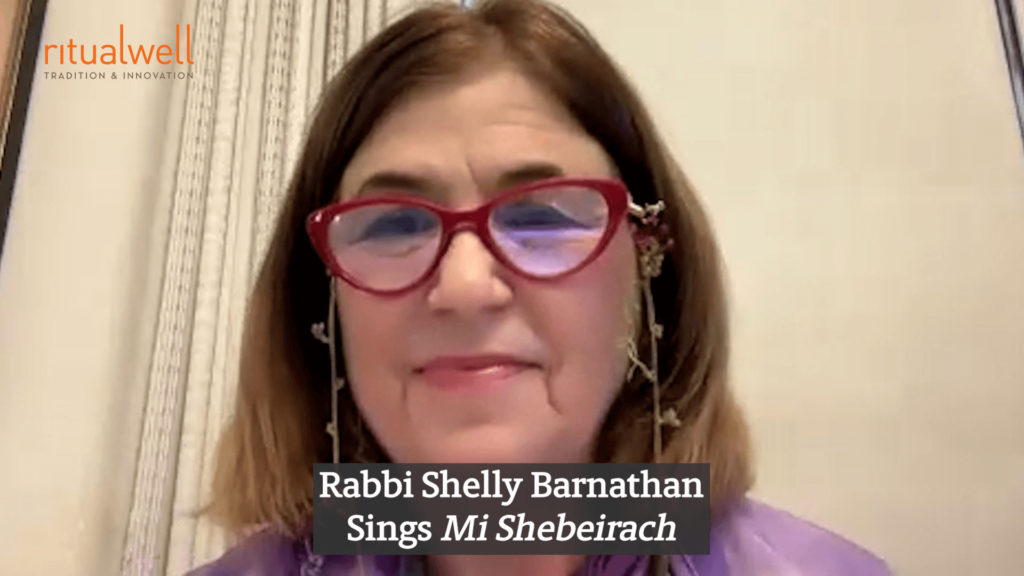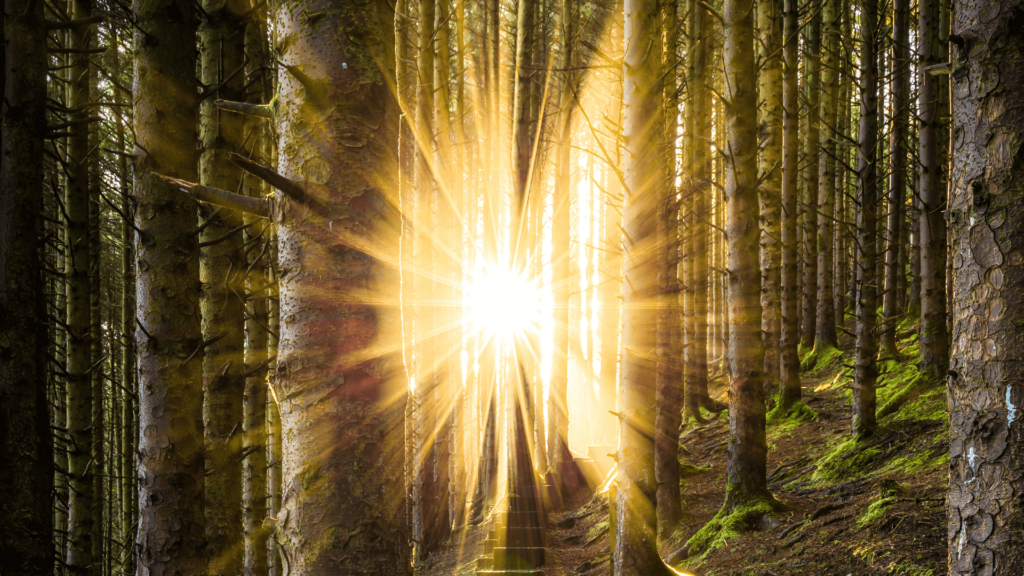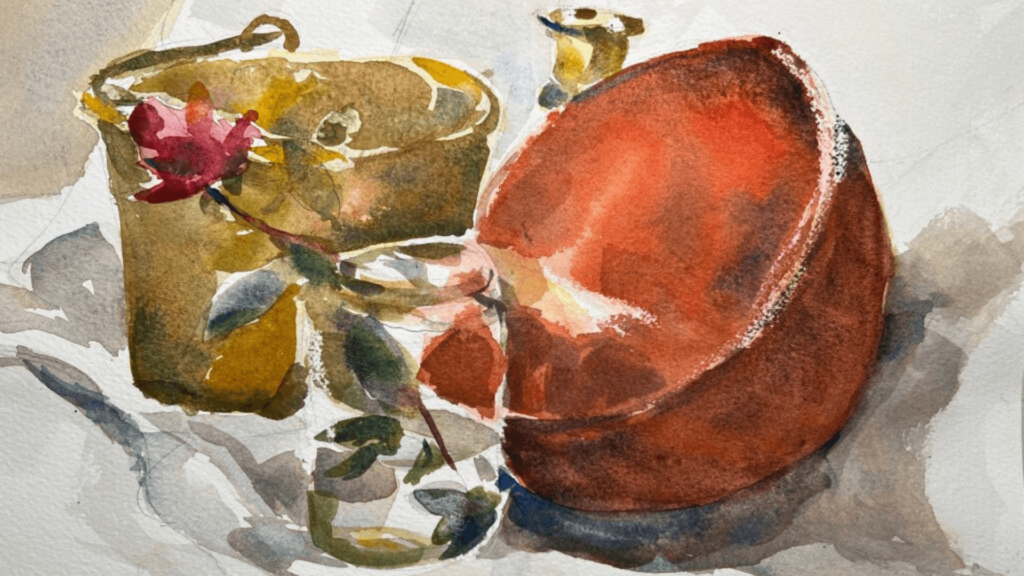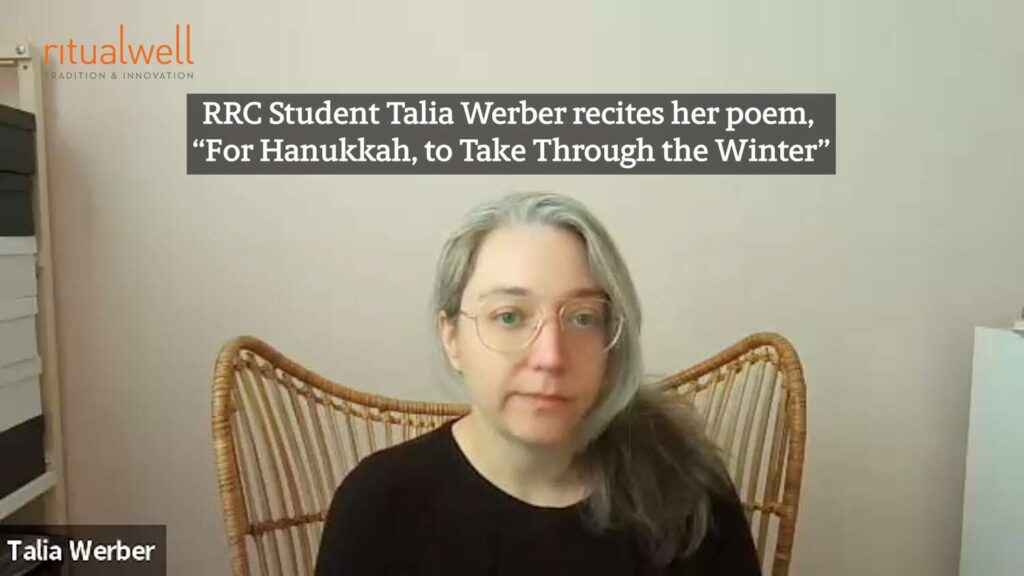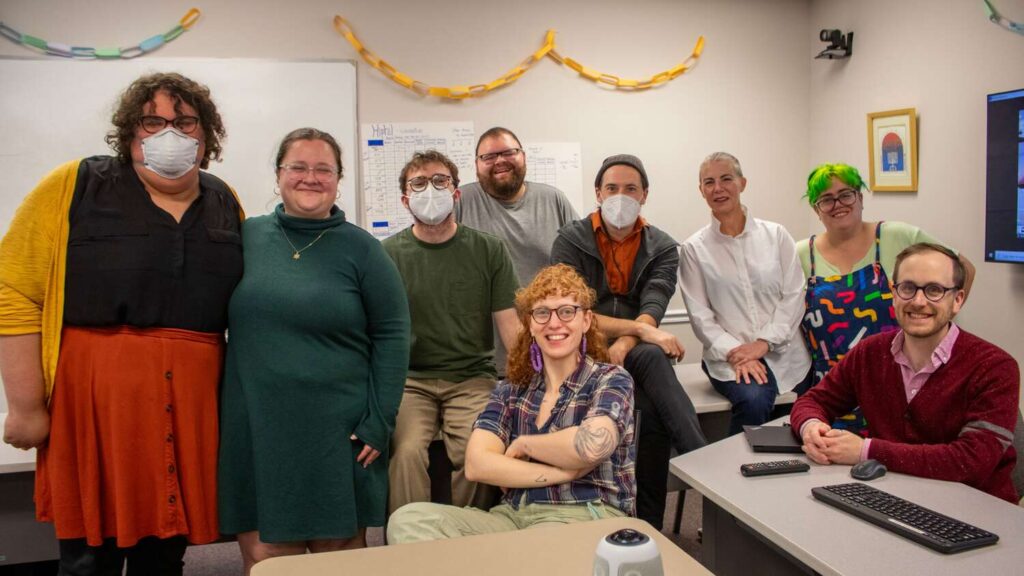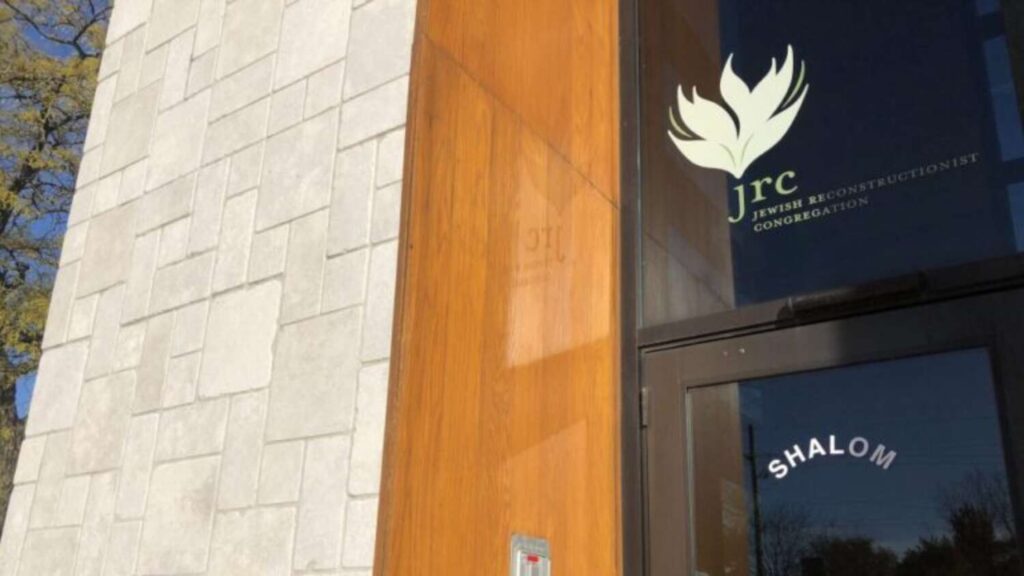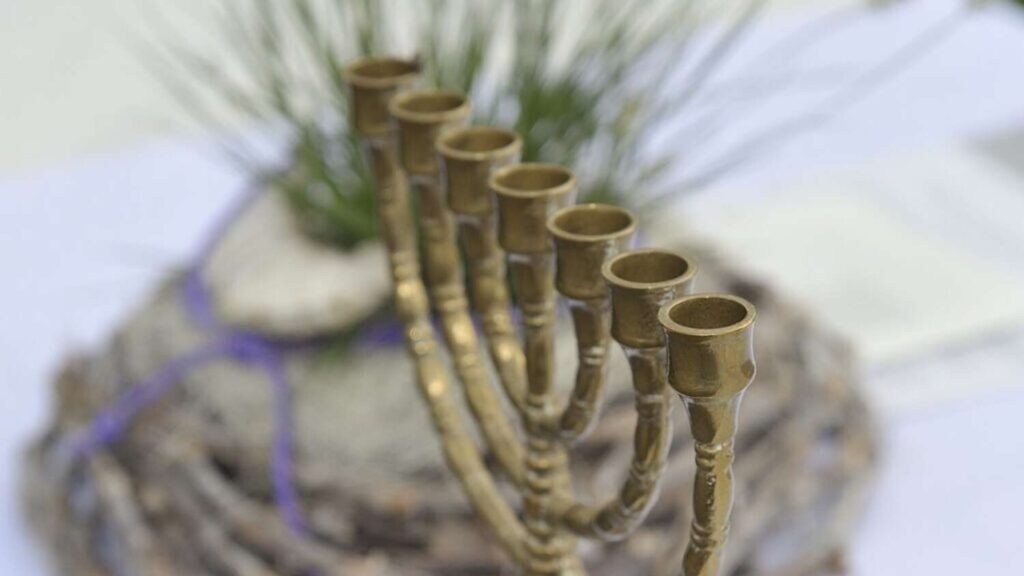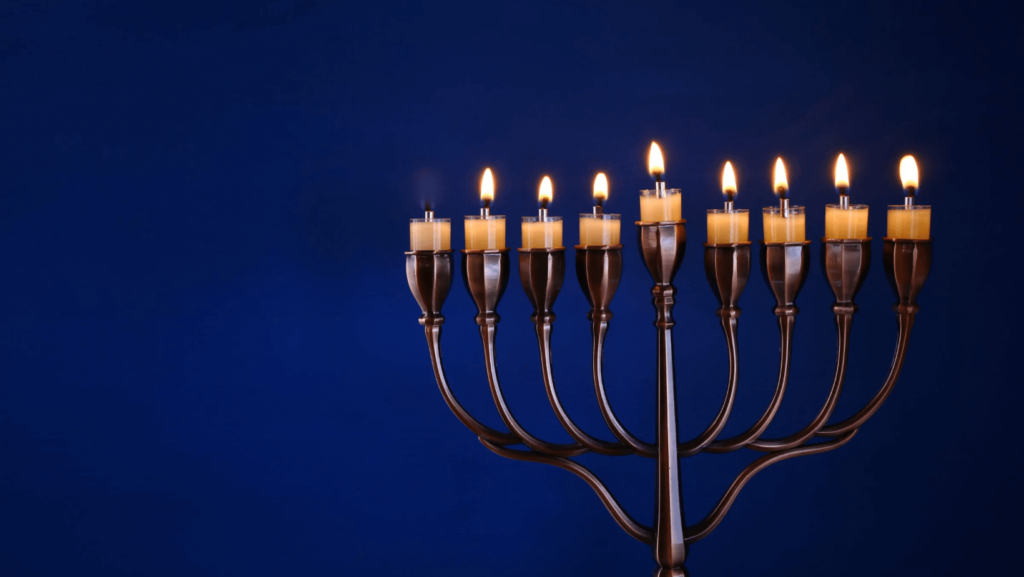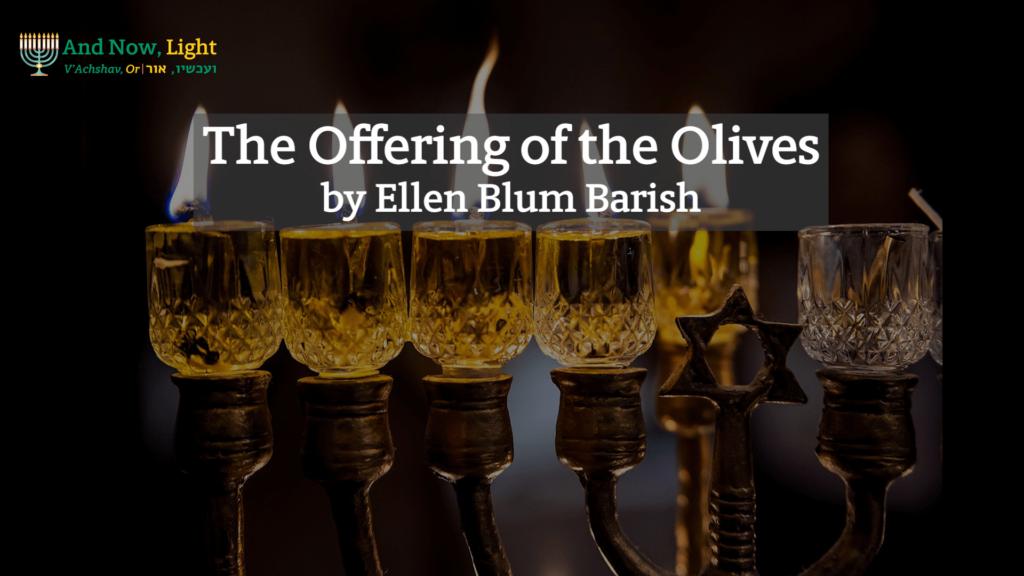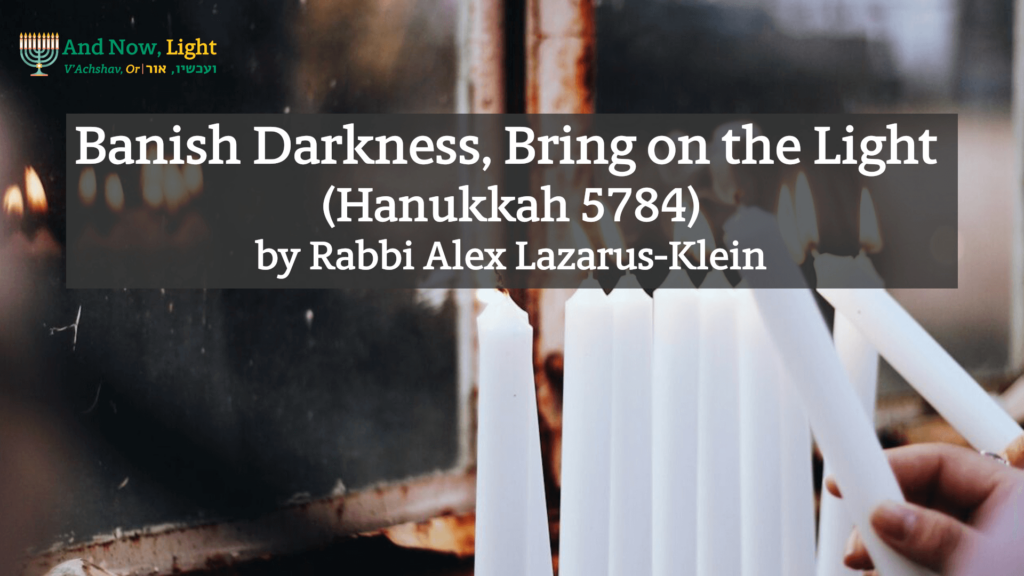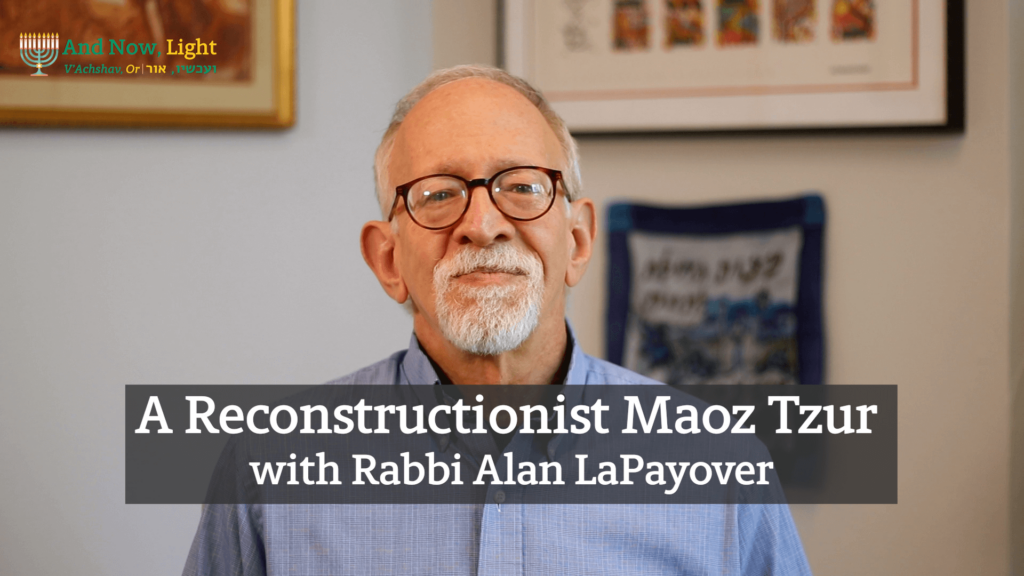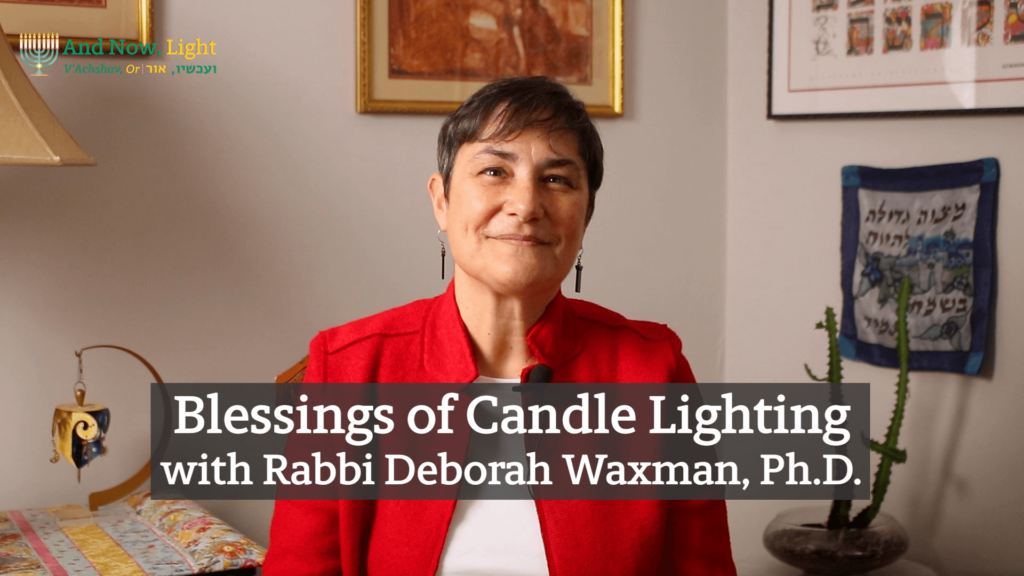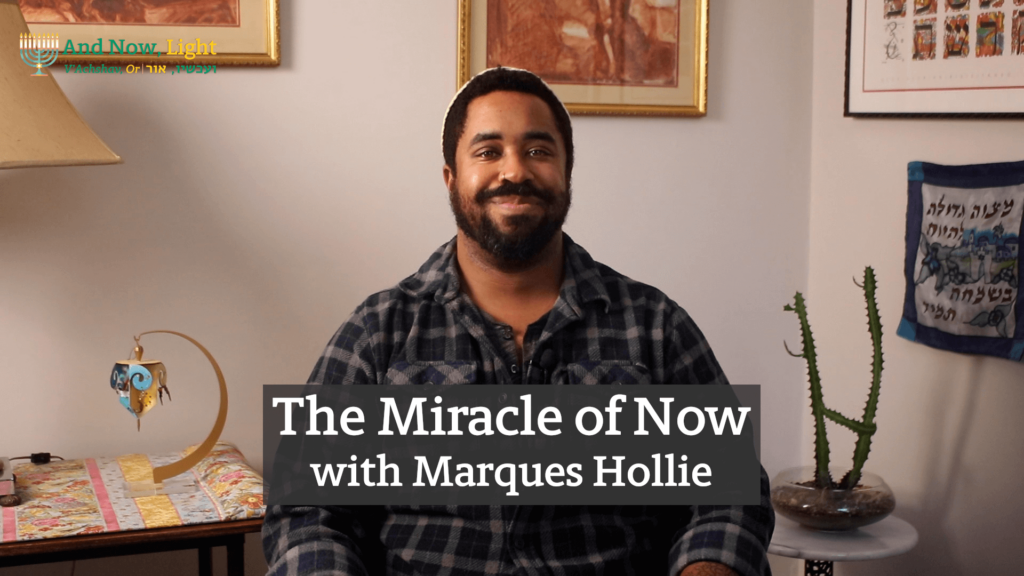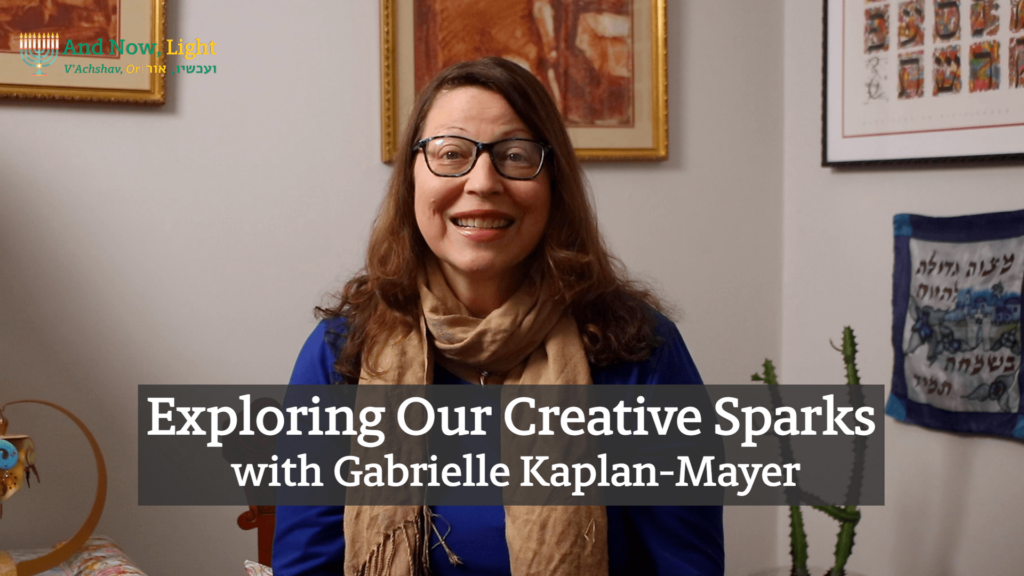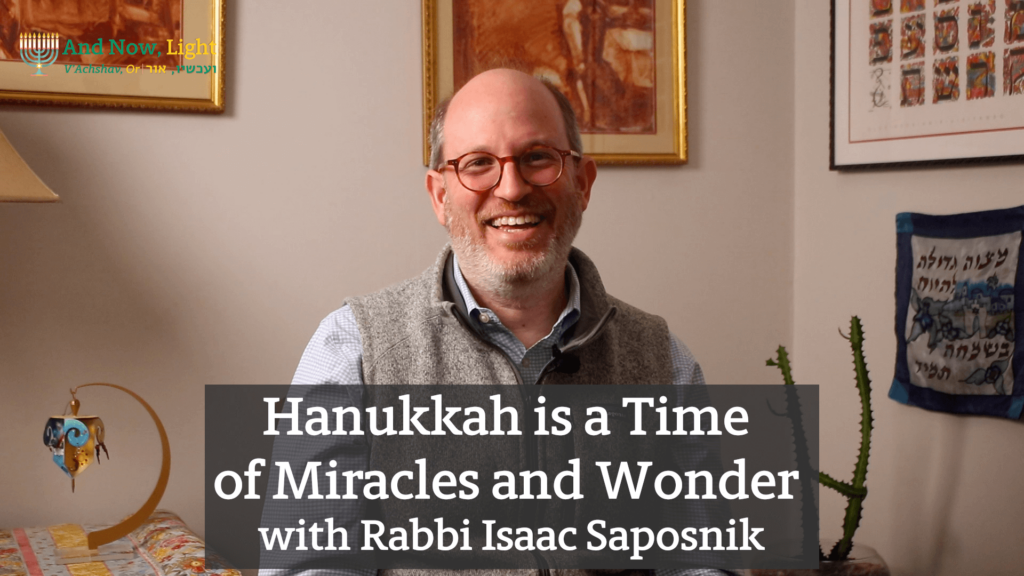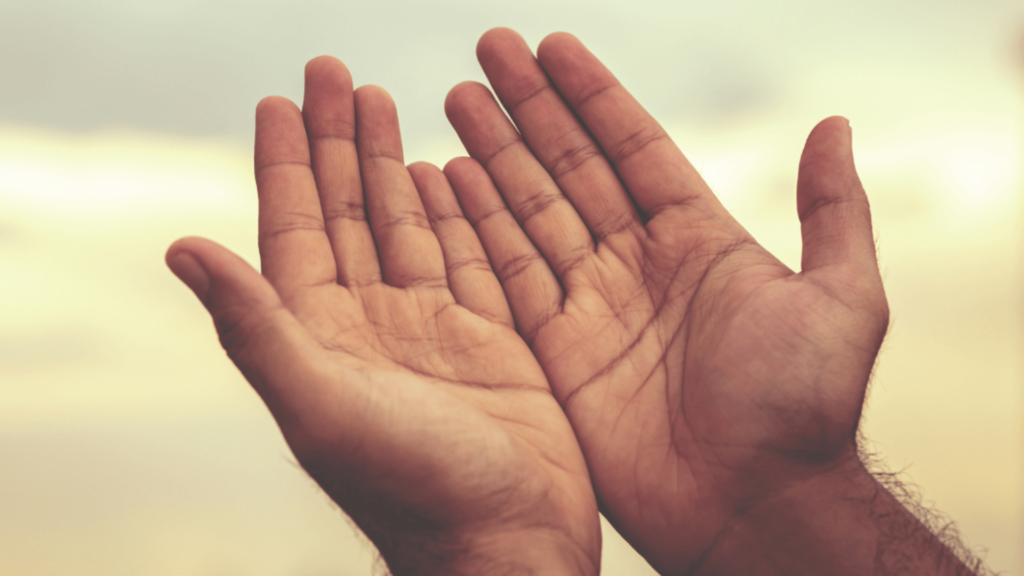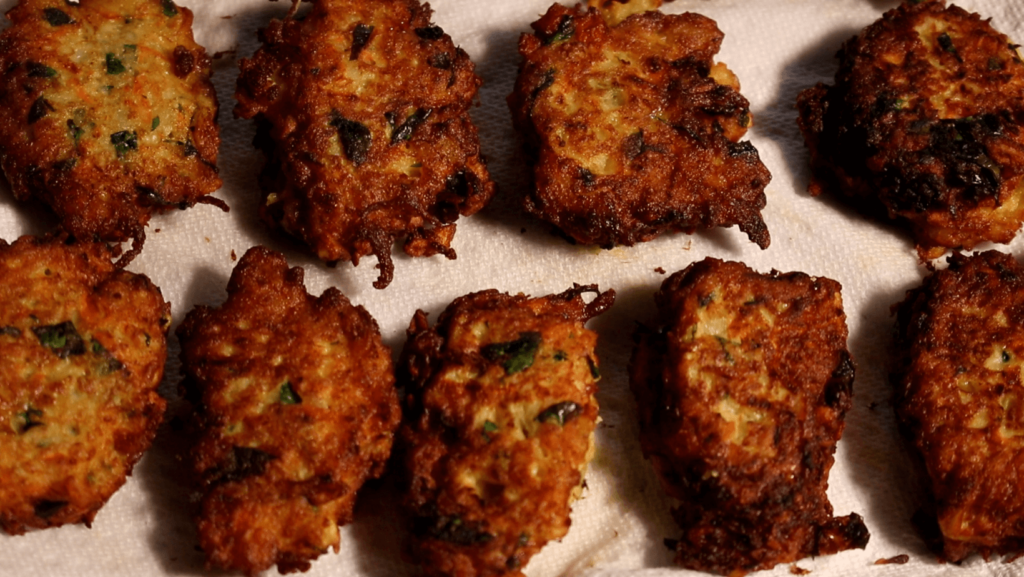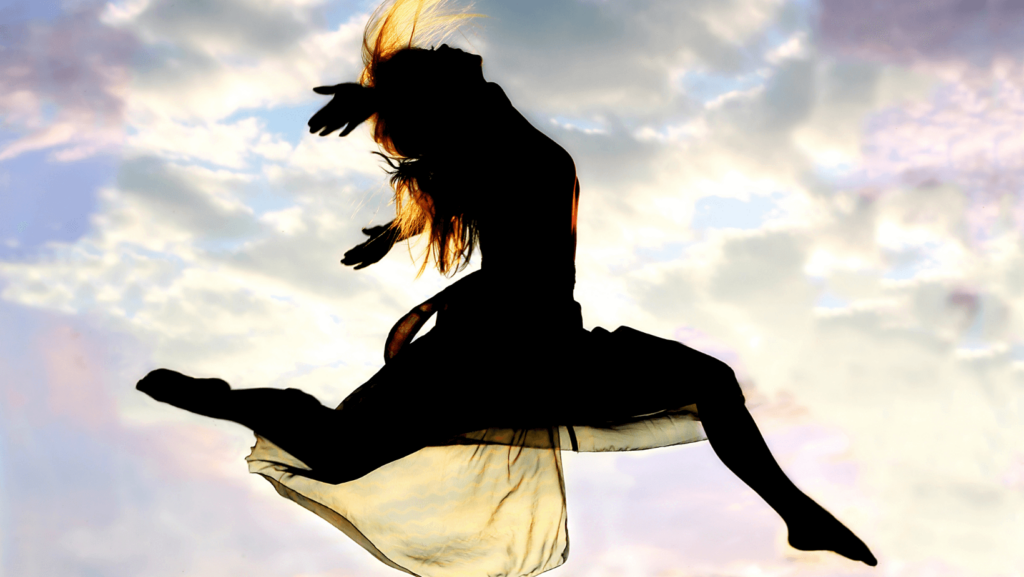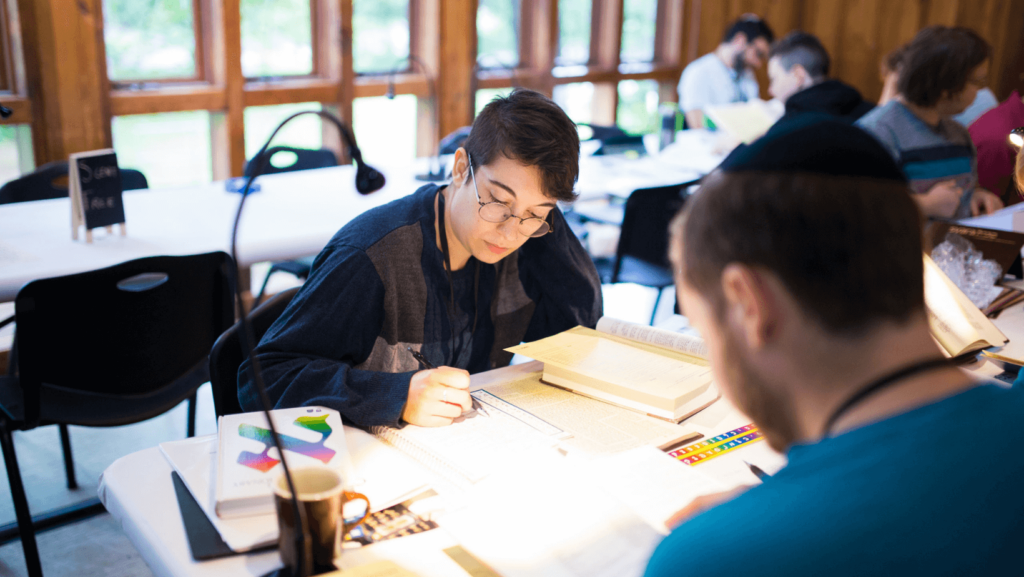Virtual Shabbat Box
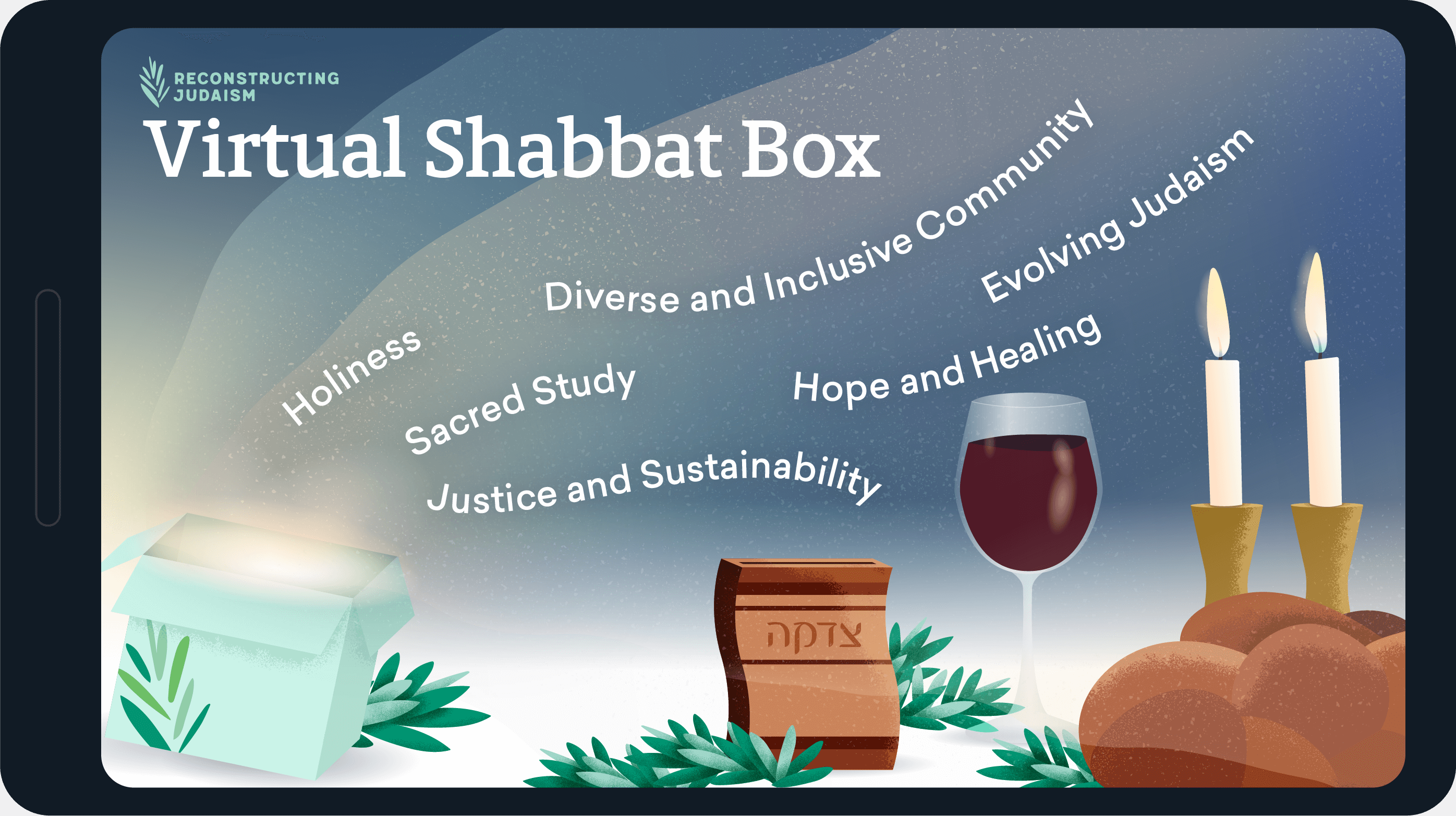
Your Virtual Shabbat Box holds many ways to celebrate the day. Choose what nurtures you: listen, watch or read.
April 12-13
The voices of Jews of Color have largely been missing from the pages of Passover Haggadot. These supplements offer the beginnings of a corrective.
Rabbi Joshua Boettiger, a poet and Mussar teacher, explores how retelling the Passover story illuminates the nature of suffering and has the potential to cultivate empathy.
Rabbi Isaac Saposnik shares poetic wisdom for your seder table about what one can say to our children—and to the adults at a seder held in this confounding year 5784.
The Virtual Passover Box is a trove of digital resources designed to help you experience, and retell, the central story of the Jewish age. These resources enhance all 15 parts of your seder.
April 5-6
The mother of Moses, Aaron and Miriam isn’t given much character development in Exodus. Here, Rabbi Sonja K. Pilz’s stirring poem imagines Yocheved’s voice in its full power and complexity.
With Passover approaching, it’s the perfect time for this blessing for the simple joy of bread. Leavened bread.
During the weekly Ritualwell “Holding Each Other” gathering, Rabbi Shawn Zevitt strums his acoustic guitar, performing an ancient prayer for healing.
Rabbi Rebecca Lillian analyzes the state of antisemitism in Sweden and Denmark, offering both sobering and hopeful observations.
March 29-30
Learn about the organization that’s building inclusive communities, training tomorrow’s rabbis, connecting people through digital platforms and dismantling systemic racism and antisemitism.
During the weekly Ritualwell “Holding Each Other” gathering, Poet Ellen Blum Barish invites readers to see flowers in a new way and to draw on everyday objects to find their own creativity.
Rabbi Haviva Ner David, an activist, writer and mother shares what life is like in Israel now and how she found the strength, after October 7, to return to interfaith solidarity work.
Rabbi Deborah Waxman welcomes Cheryl Cook, CEO of Avodah, for a wide-ranging conversation about being women in leadership, justice work, allyship, parenthood and more.
March 22-23
Rabbi Seth Goldstein’s latest video gets us in the mindset for Purim, carries a poignant message and aims for a few laughs.
Think you know Purim? If you haven’t experienced the festive meal, you’ve missed half the zaniness and insight.
This stunning artwork and prose poem imagines what Vashti might have said to King Ahasuerus from the beyond the grave, a message with eerie resonance at a time when Jews are imperiled.
Honor Vashti’s courage while getting this Purim earworm stuck in your head.
March 15-16
We’re told that God doesn’t appear in the Book of Esther. But what if the Shekhinah — the kabbalistic, feminine presence of the divine — is embodied in Esther herself?
Spice up your Purim with two Iraqi Jewish deserts: savory Sambusak and sweet B’ab’a B’tamer.
Rabbi Isabel de Konick addresses the loneliness epidemic and shares her rabbinate’s central purpose: to help people find connection and meaning.
Learn how rabbis can turn political conversations into pastoral moments, console suffering and ensure their communities are spaces of deep meaning — especially in wartime.
March 8-9
What started as a sermon about the stigma of mental illness grew into a mental health task force fostering wellness, serving as an example of how Reconstructionist Judaism works in practice. (Scroll to the bottom of the page at the link to watch the video.)
Commissioned in honor of the Reconstructionist Rabbinical Association’s 50th anniversary, this collection of seven essays by clergy explores the rabbinate’s history, challenges and opportunities.
Writer Gabrielle Kaplan-Mayer shares a poem and writing prompt that invites us to process loss and appreciate the presence of those who anchor our lives.
Rabbi Alex Weissman examines an episode from Talmud and what it says about our tradition’s complicated relationship with both misogyny and female empowerment.
March 1-2
Poet Darcy Graberstein describes how a billboard on a New Jersey highway brought emotions to the surface regarding October 7 and the hostages remaining in Gaza. And she provides a writing prompt: How are you filling your void, right now?
Here’s a song and a prayer that’s both a call for justice and a desperate longing to bring the hostages home.
Rabbi Nancy Fuchs Kreimer shares how making mistakes taught her valuable lessons in interfaith solidarity work.
Rabbi Elyse Wechterman discusses the first 50 years of the Reconstructionist Rabbinical Association and the challenges of being a rabbi after October 7.
February 23-24
Poet Tzivia Gover recites “The Word is Wind” and offers a writing prompt guaranteed to spark creativity.
Israeli Peace activist Haviva Ner-David shares a moving meditation on death and life during wartime.
The blessing celebrates how a bimah ramp can eradicate a physical barrier to connecting more deeply with Torah and Jewish community.
Humans have agency over our lives, right? Not according to Mike Shore, who argues that abandoning the notion of free will leads to a more liberated, meaningful life.
February 16-17
Learn how Reconstructionist community sustained Rabbi Asher Sofman and about the values that animate Reconstructing Judaism’s new Justice, Equity, Diversity and Inclusion (JEDI) program coordinator.
Accordion in hand, Rabbi Solomon Hoffman talks about the relationship between waiting and hoping and offers an original take on Psalm 130.
Prompted by a comment by a presidential contender, Rabbi Sandra Lawson articulates her profound connection to the side of American history encompassing the Atlantic Slave Trade, Jim Crow and the Chinese Exclusion Act.
This berakhah celebrates the autistic mind as something “wonderful and unique in the world.”
February 9-10
This new blessing celebrates the diversity of minds, bodies and abilities present in human beings.
During Ritualwell’s weekly virtual “Holding Each Other” gatherings, author Evonne Marzouk reads her poem, “Things I Need to Hear Right Now After Nine Days in Jerusalem.”
Rabbi Sandra Lawson’s new blessing offers thanks for the “strength, resilience and contributions of my people, Black people throughout history and today.”
Black History Month is the perfect time to consult our groundbreaking curriculum on the intersection of Judaism and race.
February 2-3
Karen Webber, a poet and performance artist, enacts and, at times, sings, two linked poems, “No Cakewalk” and “L’chaim” that mine the emotional depths, describing horror with pinpoint detail and, somehow, bringing us back to the light with a jubilant wedding celebration.
Rabbi Asher Sofman, Reconstructing Judaism’s inaugural justice, equity, diversity and inclusion (JEDI) program coordinator, created this trove of resources in Jewish disability and accessibility inclusion from Reconstructionist communities and the larger Jewish world.
Rabbi Roni Handler chants the Ve’ahavta, while Rabbi Darby Leigh expresses one of Judaism’s central prayers in American Sign Language.
From our archives: Rabbi Elliot Kukla describes how the disability justice movement honors the “the unique ways we move through the world, and rejects racist, conformist notions of ‘normalcy’ in how we ought to look, behave and produce.”
January 26-27
The Torah tells us that a human being is like a tree in the field, and this meditation encourages us to envision ourselves as planted by the divine.
Scholar, rabbi and lawyer Jay Michaelson talks about his first book of fiction — which tackles queerness and mysticism — and his post–Oct. 7 journalism for the Forward and Rolling Stone.
During a Ritualwell “Holding Each Other” virtual gathering, Rabbi Joshua Boettiger offers writing prompts that ask us to investigate the stories that different parts of our bodies may be telling us.
Not all disabilities are readily visible and apparent. This prayer asks that all those who live with less visible disabilities realize the expansiveness of their gifts.
January 19-20
Rabbi Alex Lazarus-Klein explains how “new year for trees” helps explain Reconstructionist approaches to Jewish practice and celebration.
During Ritualwell’s weekly “Holding Each Other” program, artist Betsy Teutsch recounts the process of illustrating the Reconstructionist prayerbook, sharing some light during a dark time.
Learn the basic history and theology of Tu B’Shvat from this excerpt from “A Guide to Jewish Practice.”
This Tu B’Shvat ritual explores the kabbalistic symbolism of the number four.
January 12-13
Dr. Martin Luther King Jr.’s landmark 1967 “Beyond Vietnam” speech is set to traditional haftarah melodies, adding a new layer of meaning to King’s prophetic words.
At Ritualwell’s weekly “Holding Each Other” gathering, poet Hila Ratzabi reads the title piece of her debut collection and offers a prompt to spark creativity.
Revisit this conversation — the most downloaded Hashivenu episode ever — between Rabbi Deborah Waxman and Rabbi Sandra Lawson about what it means to be an ally to groups and individuals.
Have you ever struggled to explain racism to your kids? Flubbed conversations at the dinner table? Then be sure to catch our conversation with Buffie Longmire-Avital, Ph.D.
January 5-6
Rabbi Toba Spitzer examines a core teaching of Reconstructionist Judaism, the rejection of the idea of Jews as the chosen people and explains why it’s more relevant than ever.
Rabbi Megan Doherty shares that, in rereading the Torah every year, we encounter old friends and acquaintances as well as life’s range of highs and lows.
Rabbi Jeremy Schwartz delves into Lecha Dodi and what the 16th century poem tells us about Shabbat and the possibilities for repair and wholeness.
Tayla Jankovits’ poetic response to war looks for signs of living and endurance.
December 29-30
Rabbi Amy Eilberg addresses feelings of pain, anger and hopelessness that many of us have experienced during wartime. This podcast episode is about how individuals might seek healing and, maybe, how Jewish communities can address trauma to become healthier.
Focusing intention on courage of all kinds, Rabbi Shelly Barnathan chants Mi Shebeirach, asking for all of us to experience the renewal of body and spirit.
Sheila Peltz Weinberg describes a spiritual path that leads to happiness and has the potential to reconnect us to our pure souls.
Poet and painter Cathleen Cohen covers her figurative canvas with an ode to nuance, love and kindness.
December 22-23
Rabbinical student Talia Werber reads her poem that touches on how the lights of Hanukkah can inspire and sustain us through a winter of darkness.
Learn about the growing awareness of the liberatory potential of Torah — and how rabbinical students are taught that Judaism and Torah are powerful, meaningful and guiding resources for movements.
Members of one congregation undertook a Reconstructionist process to fashion a statement on the war, providing a model for how to engage in the toughest of issues across vast political differences.
Christmas is next week. This piece from the Ritualwell archives examines the December dilemma and how interfaith families might approach the holiday season.
December 15-16
How do we celebrate a miracles and light when so many Israeli hostages remain underground, without access to sunlight? Rabbi Amber Powers offers a way, on the eighth night of Hanukkah, to hold pain and joy.
Poet Ellen Blum Barish reminds us that oil from olives once helped us rededicate the temple, and so, too, do they bring light into our dark world.
In this poem, Rabbi Alex Lazarus-Klein shares both emotional anguish and his source of hope.
Rabbi Alan LaPayover demonstrates how a Reconstructionist take on this medieval poem reframes our understanding of the “Festival of Lights.”
December 8-9
In this message for the first night of Hanukkah, Rabbi Deborah Waxman illuminates the blessing of reciting blessings.
Marques Hollie, a Reconstructionist Rabbinical College student, shares that even in times of extended darkness, each day can bring light, if we just look for the miracles of right now.
Gabrielle Kaplan-Mayer shares how she is using her creative spark to generate new light each day.
Hanukkah isn’t a time of hiding – it’s a time to let our light shine, teaches Rabbi Isaac Saposnik.
December 1-2
Martha Hurwitz’s stunning poem evokes the liturgy of the High Holidays in asking how and why some captives are freed while others remain, investigating, agony of weighing one life against another.”
Add a new dish to your Hanukkah festivities by learning to make Aruk, Iraqi fried veggie patties.
Rabbi Lauren Grabelle Herrmann writes about a very personal situation, yet her message also applies to the state of the world: finding hope when there’s little to no evidence that things will soon improve.
Laynie Solomon, passionate teacher of Torah, explains how they draw strength from the study of Jewish texts and how Halakhah can be liberating for Queer and Trans Jews.
Get our Virtual Shabbat & Holiday Box delivered to your inbox.
These resources were drawn from:
- Evolve: Groundbreaking Jewish Conversations
- Hashivenu: Jewish Teachings on Resilience
- Recon Connect Beit Midrash
- Reset: Providing Jewish activists with accessible spiritual practice and teachings
- Ritualwell
- The Center for Jewish Ethics
Previous Virtual Shabbat Boxes by month:
- November 2023
- October 2023
- September 2023
- August 2023
- July 2023
- June 2023
- May 2023
- April 2023
- March 2023
- February 2023
- January 2023
- December 2022
- November 2022
- October 2022
- September 2022
- August 2022
- July 2022
- June 2022
- May 2022
- April 2022
- March 2022
- February 2022
- January 2022
- December 2021
- November 2021
- October 2021
- July 2021
- June 2021
- May 2021
- April 2021
- March 2021
- February 2021
- January 2021
- December 2020
- November 2020
- October 2020
- September 2020
- August 2020
- July 2020
- June 2020
- May 2020
- April 2020
- March 2020

